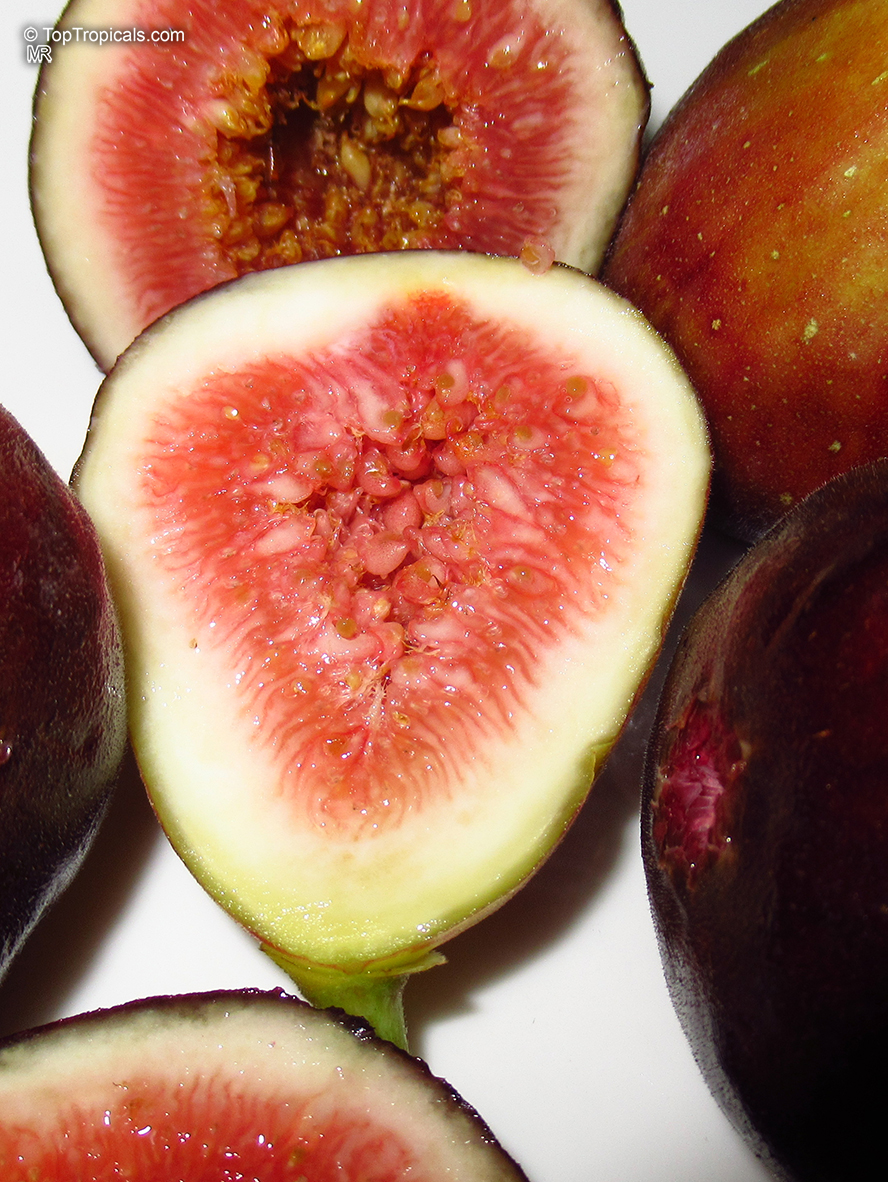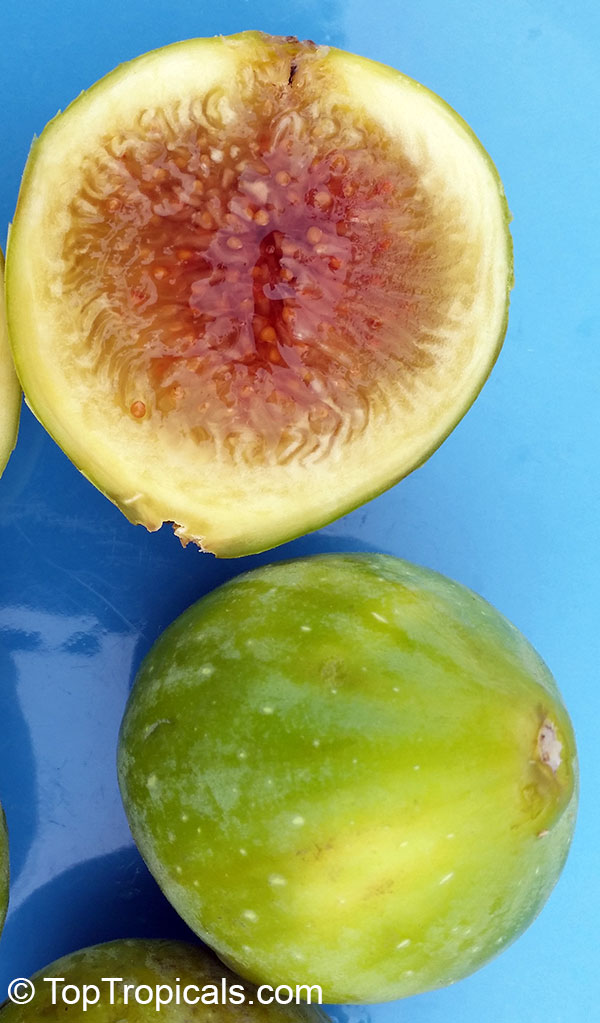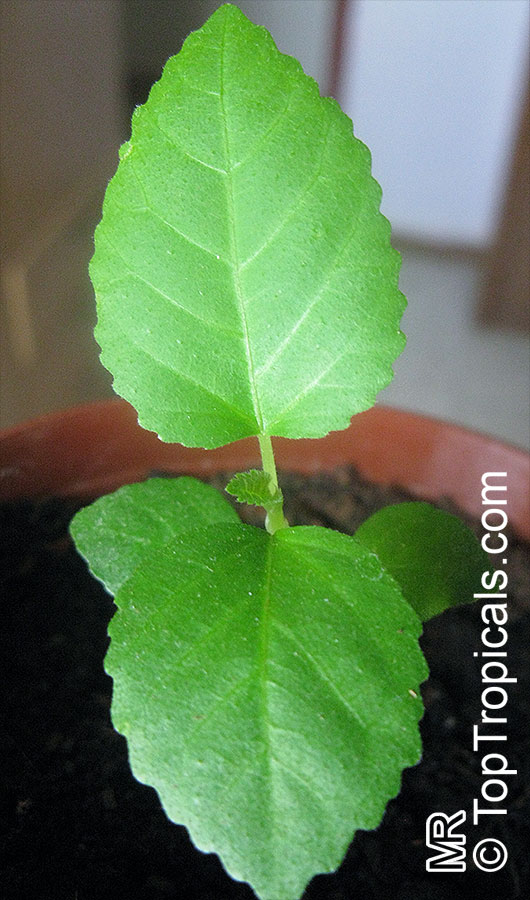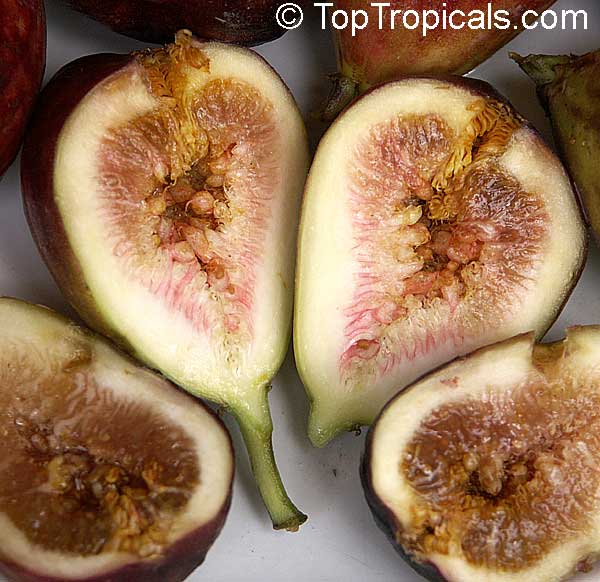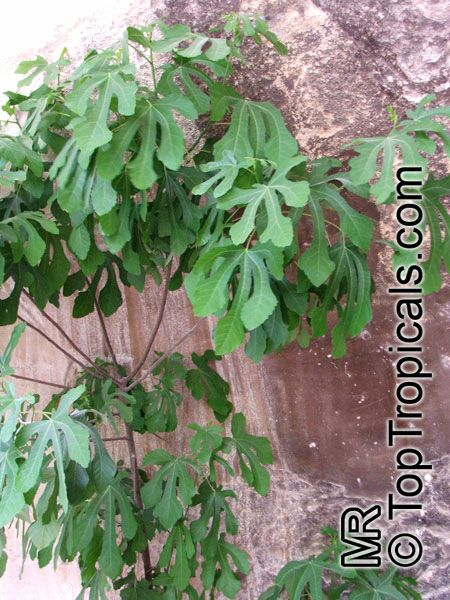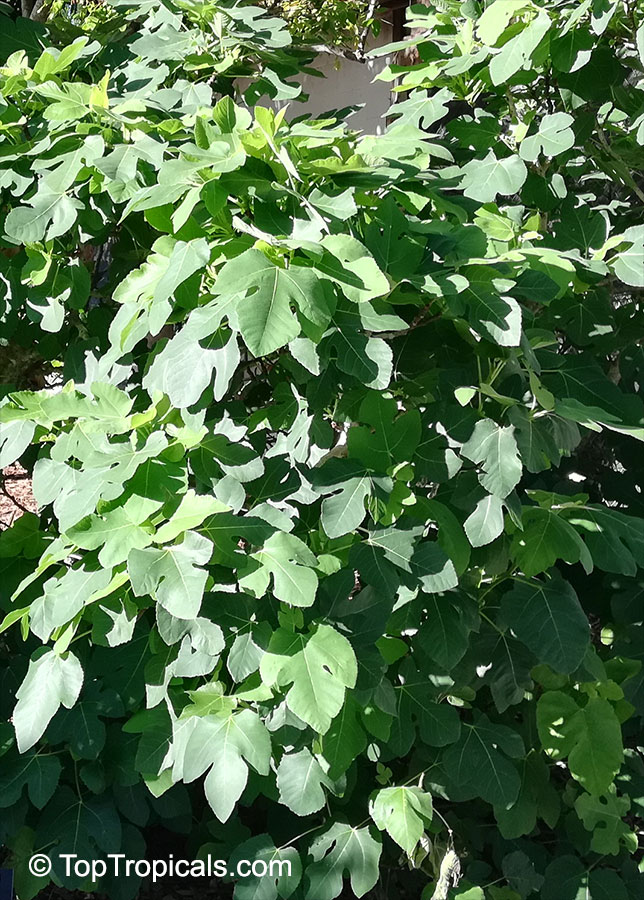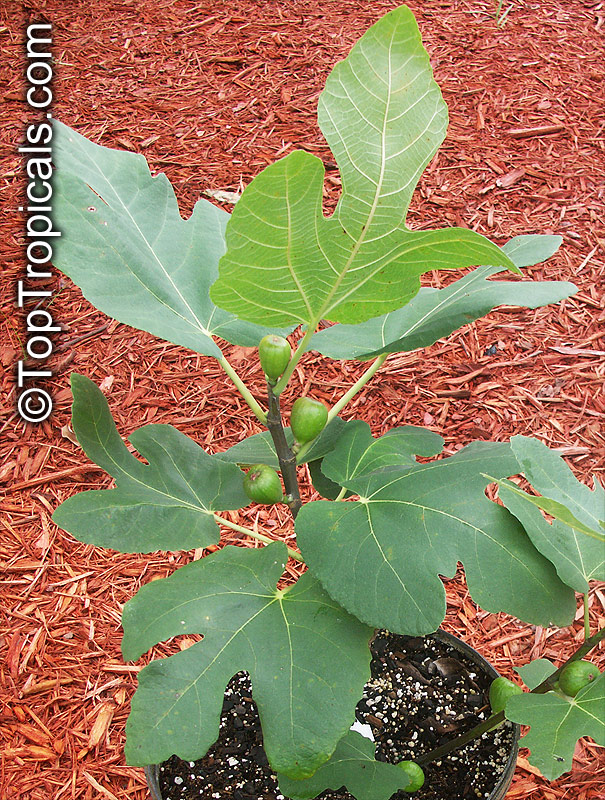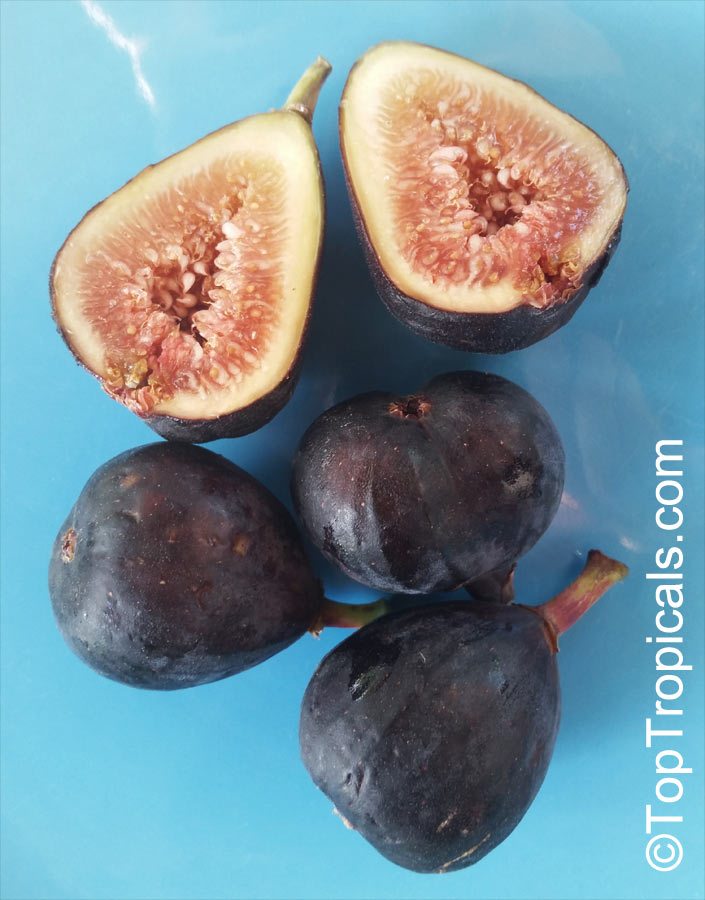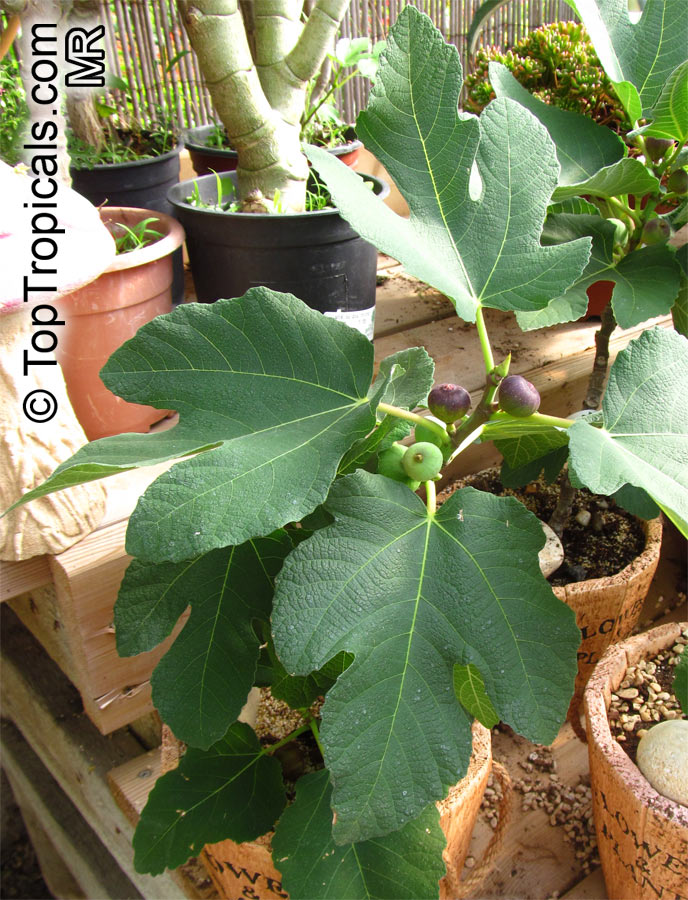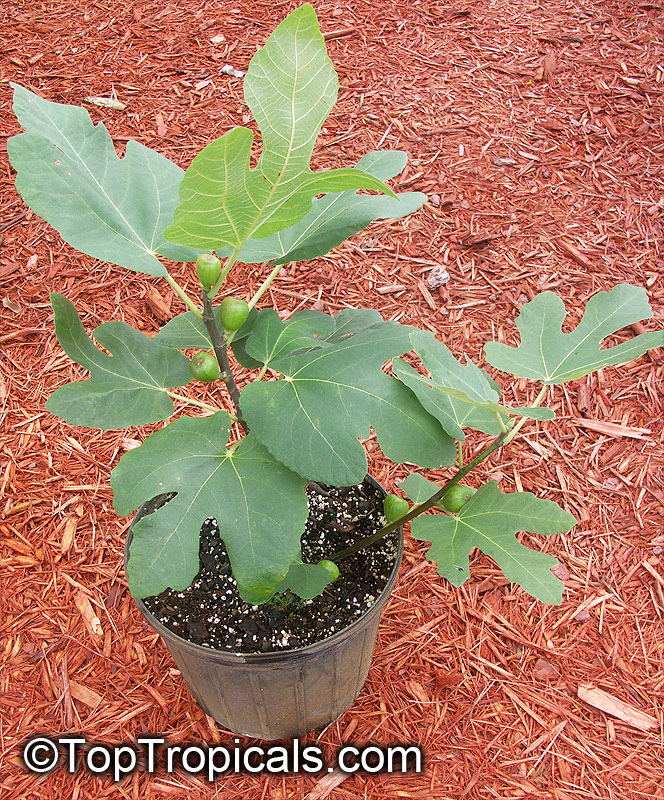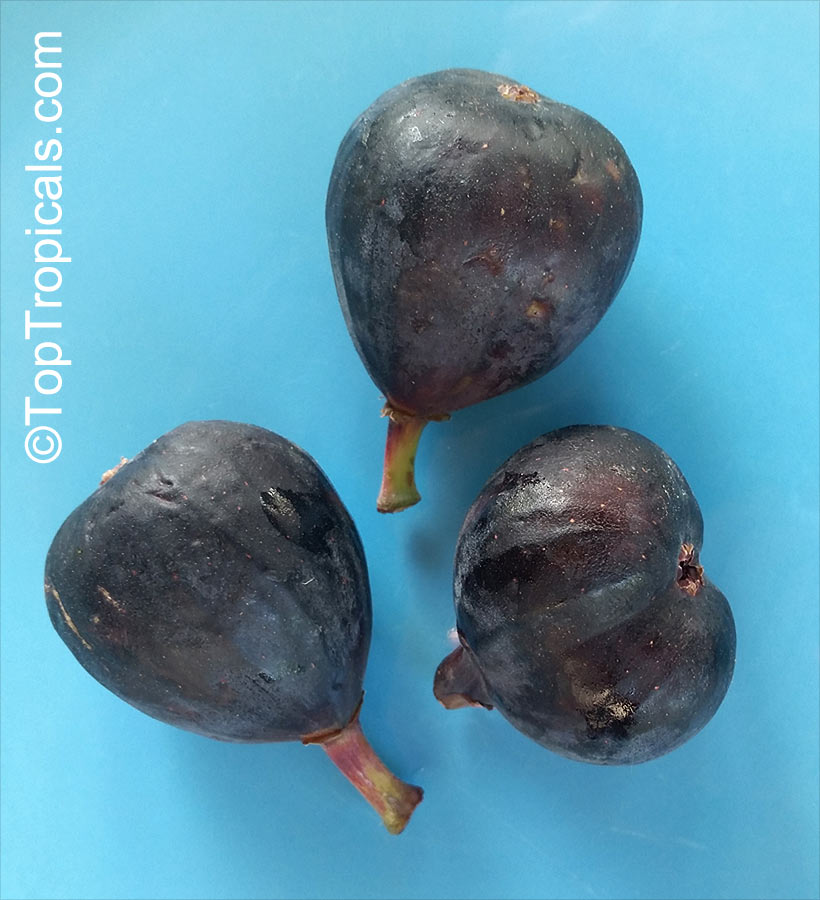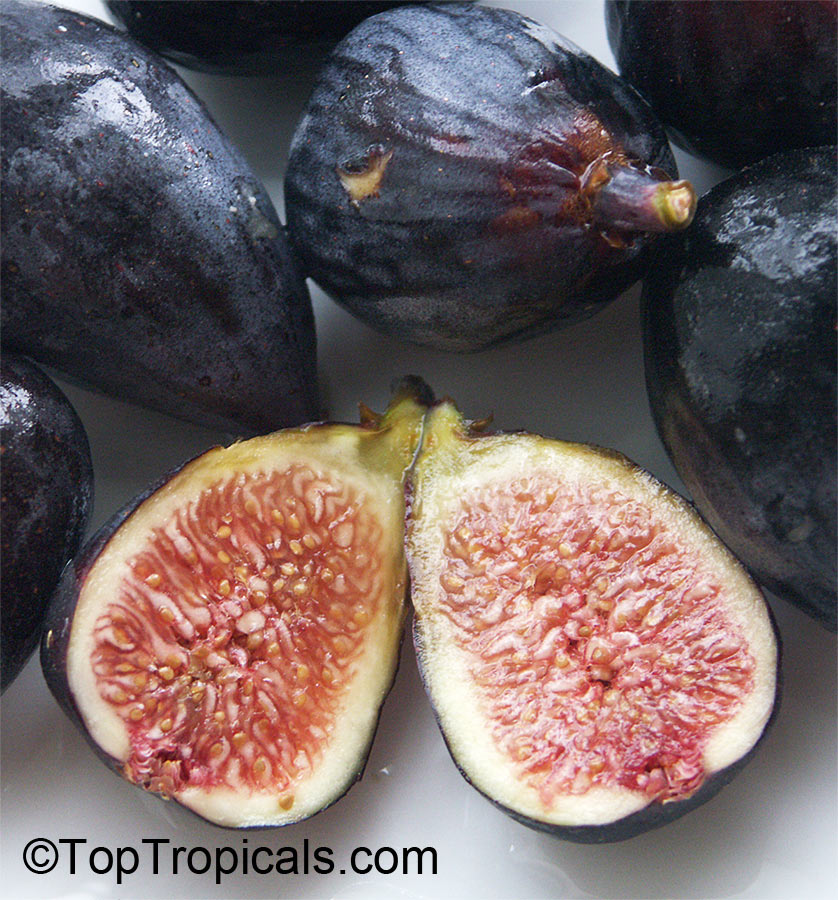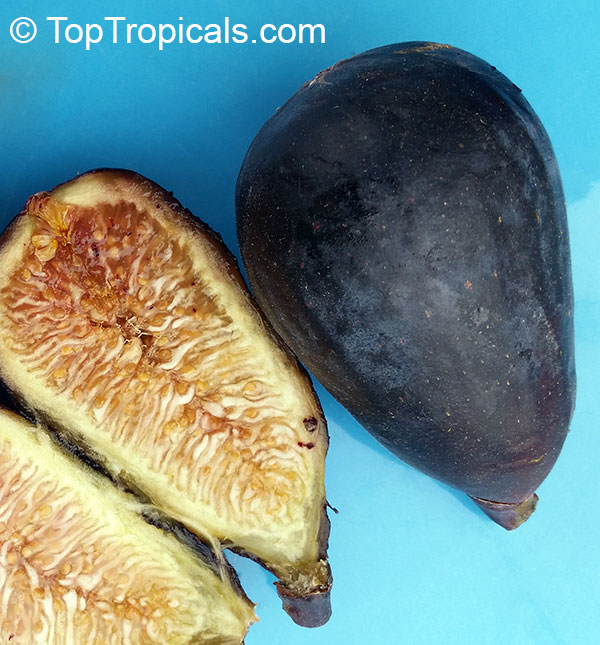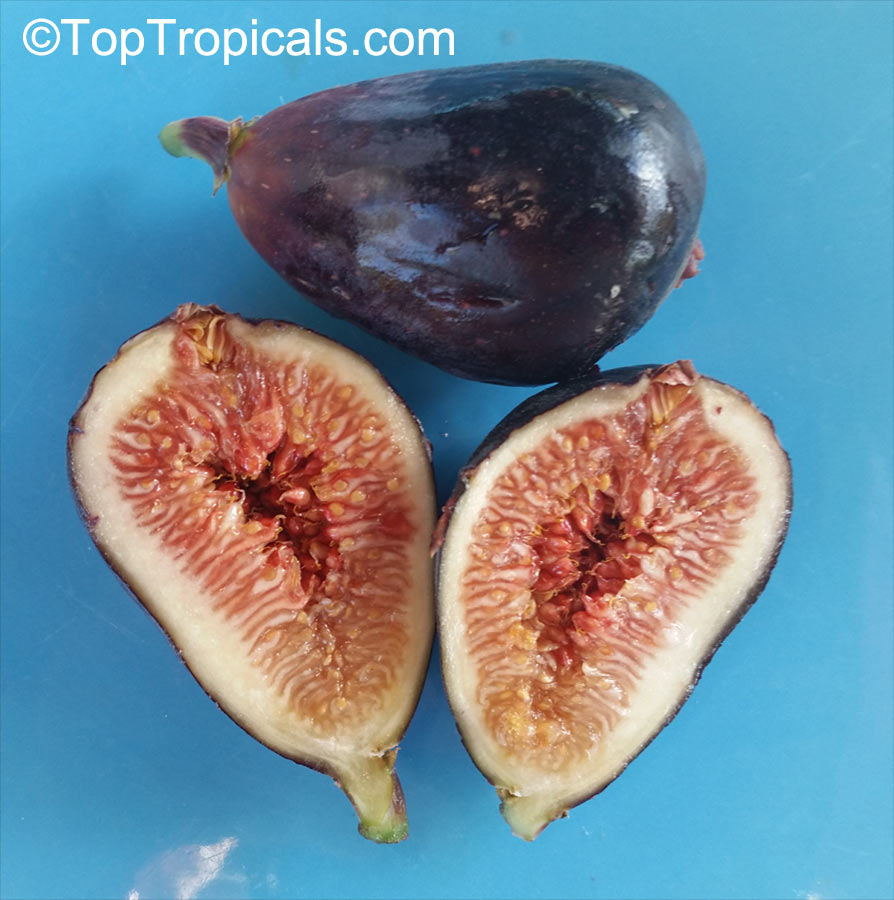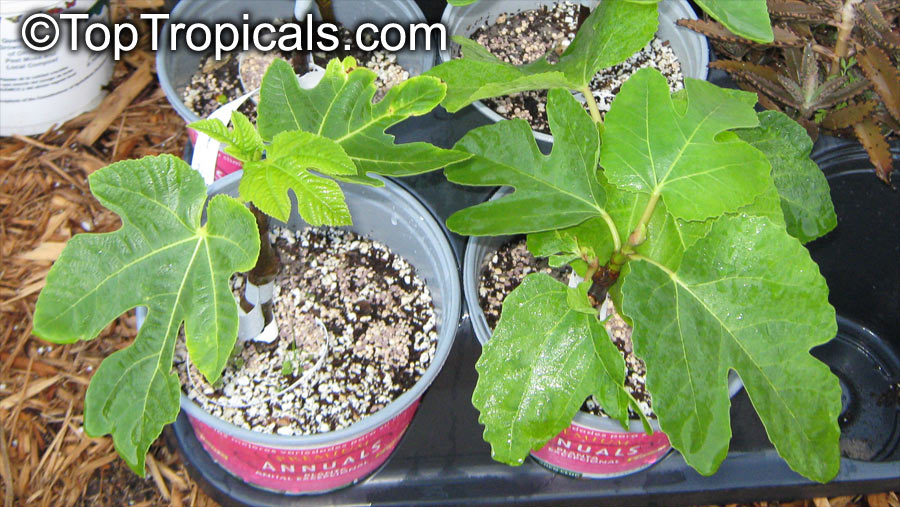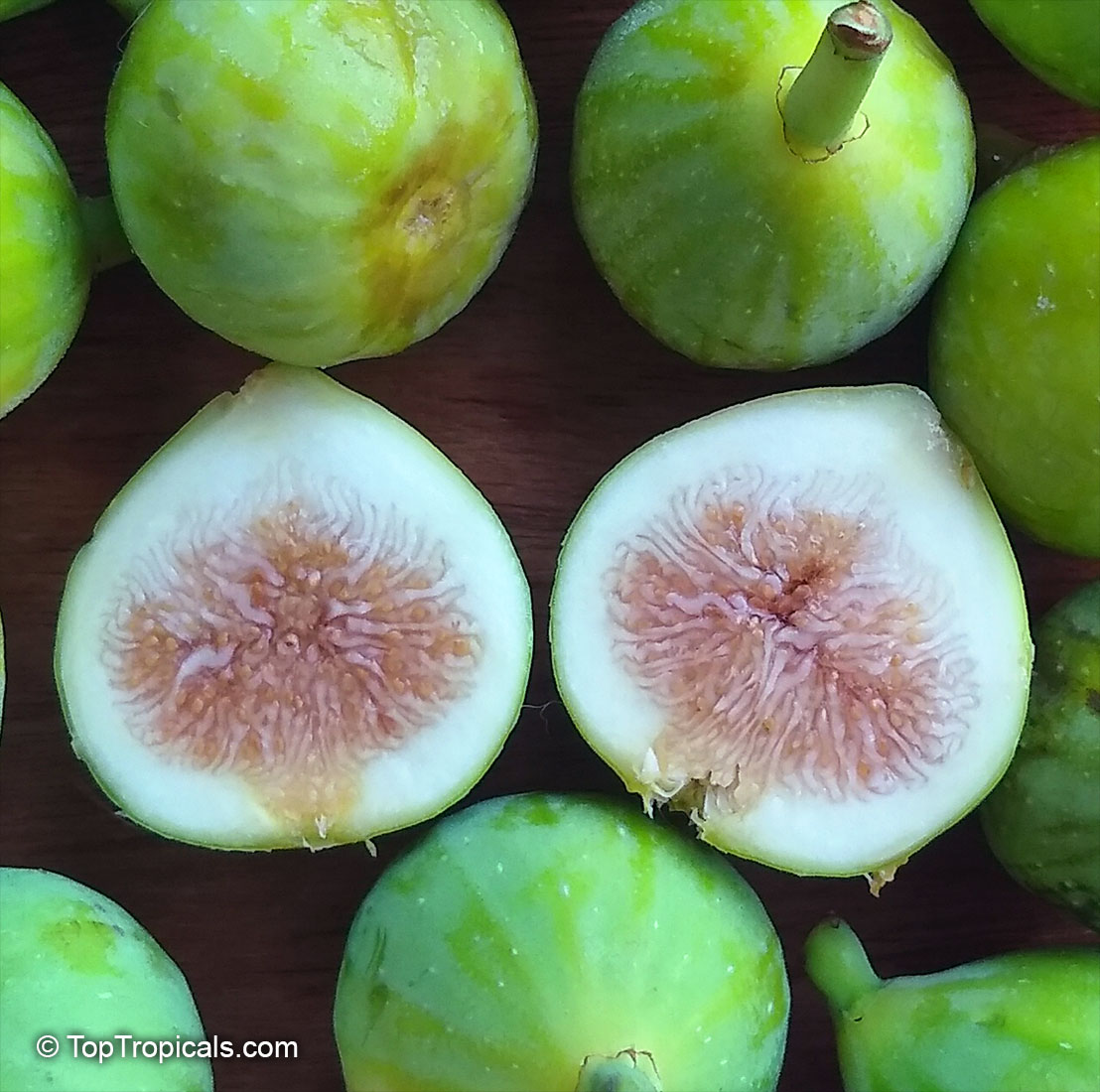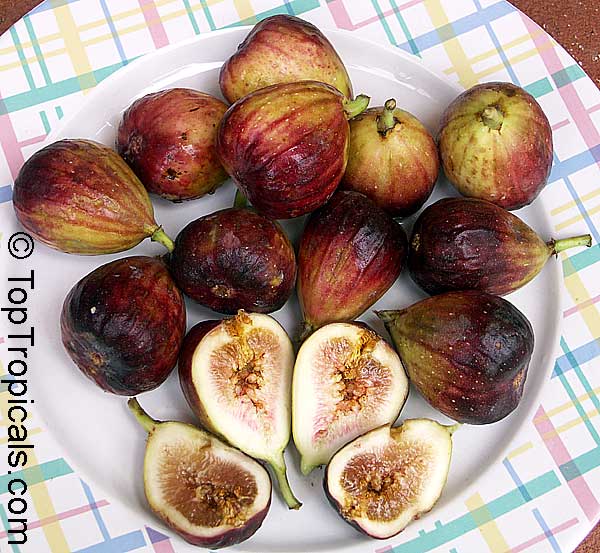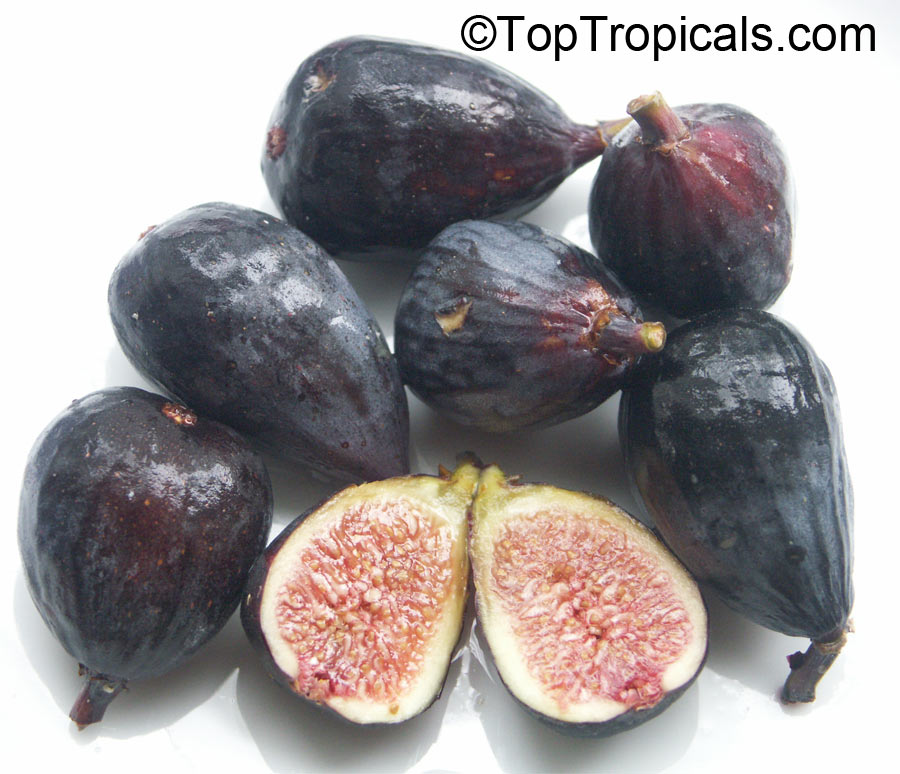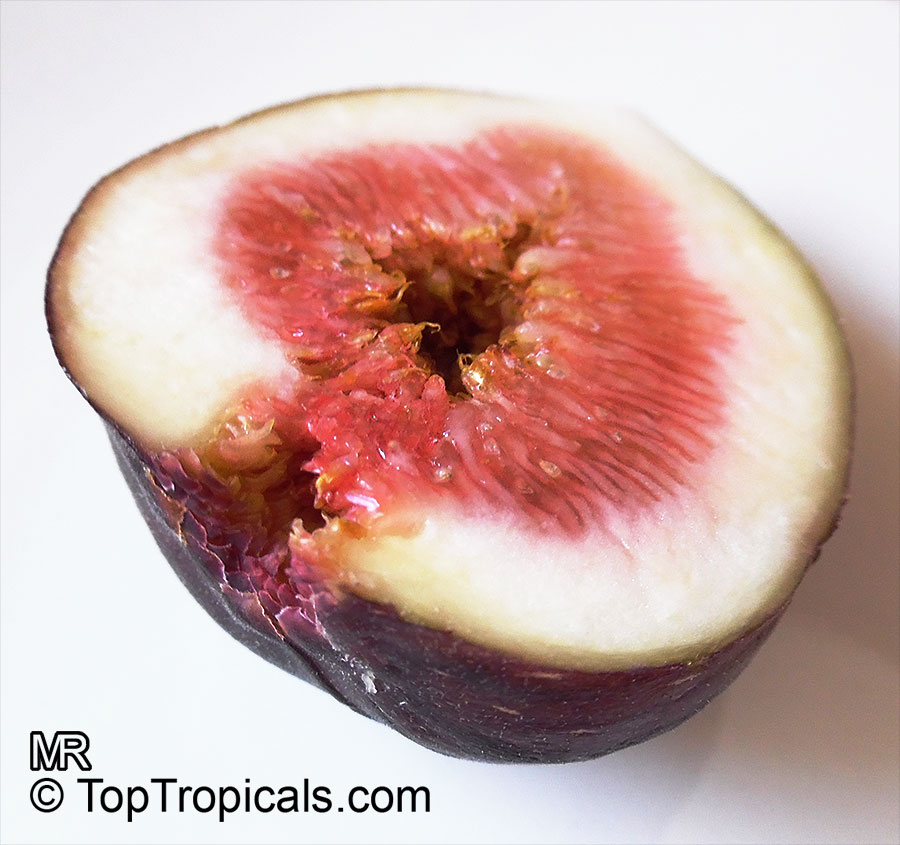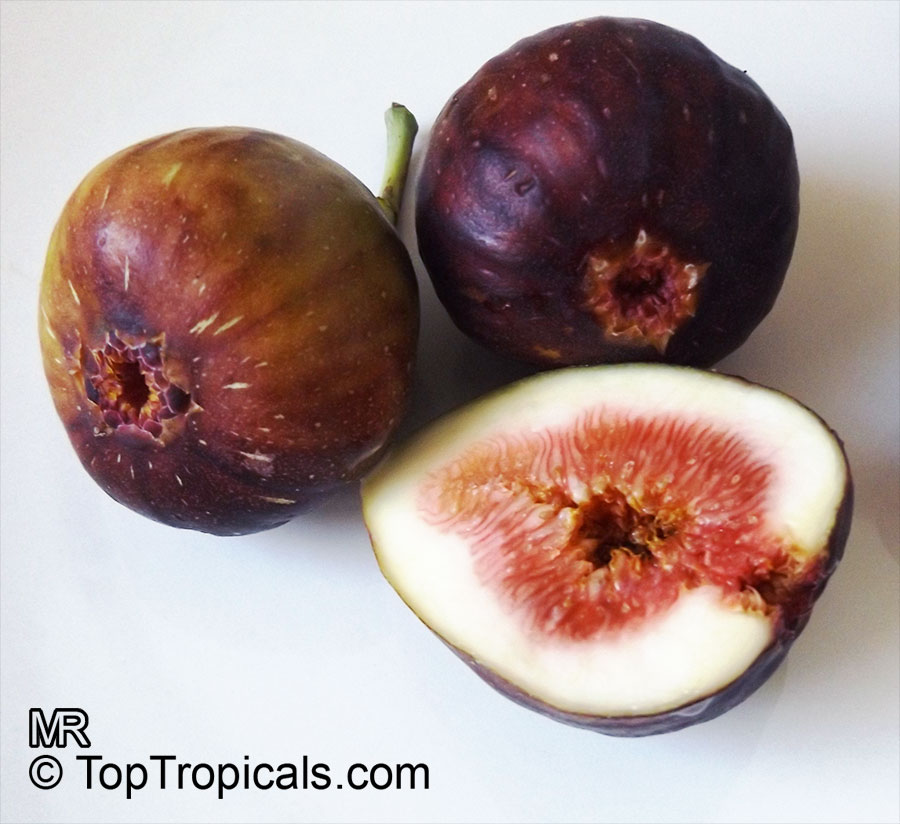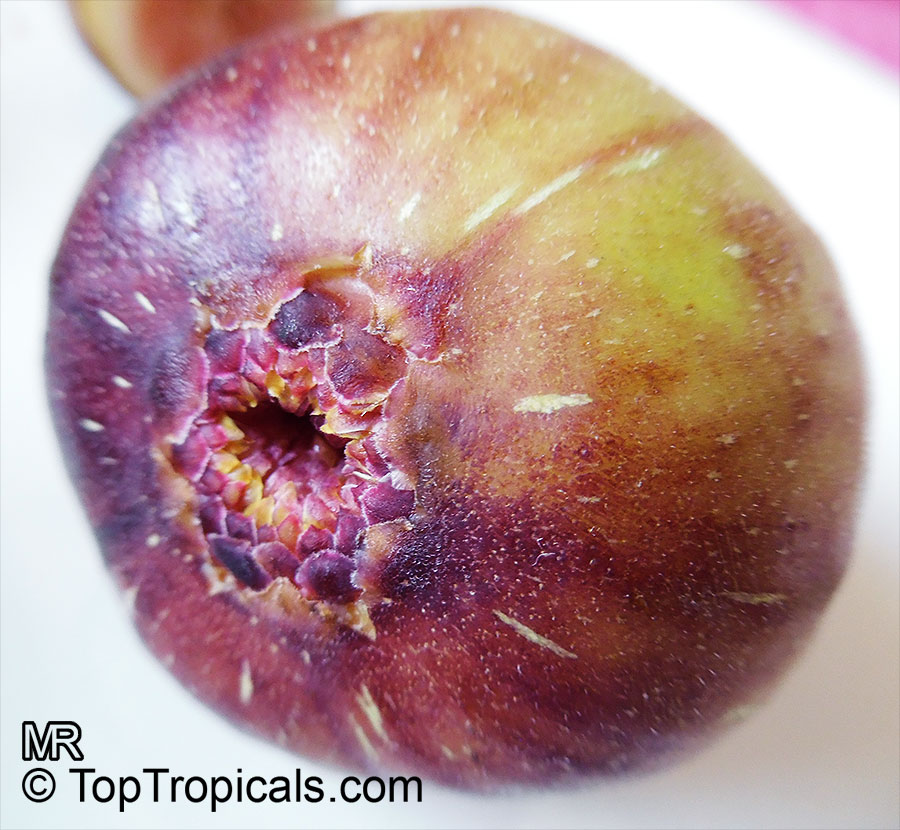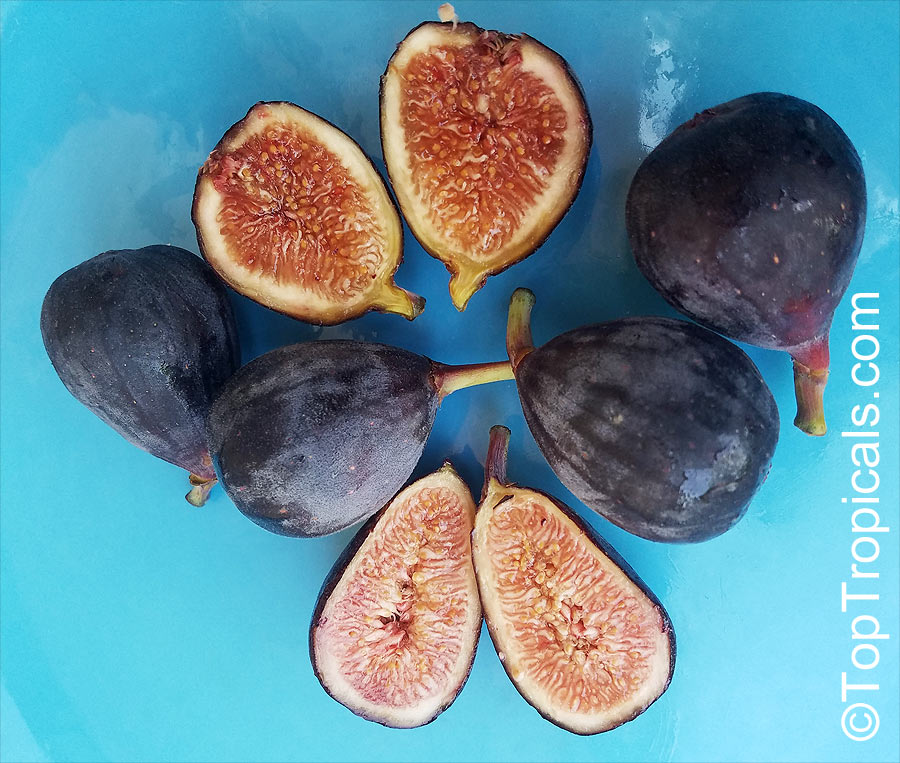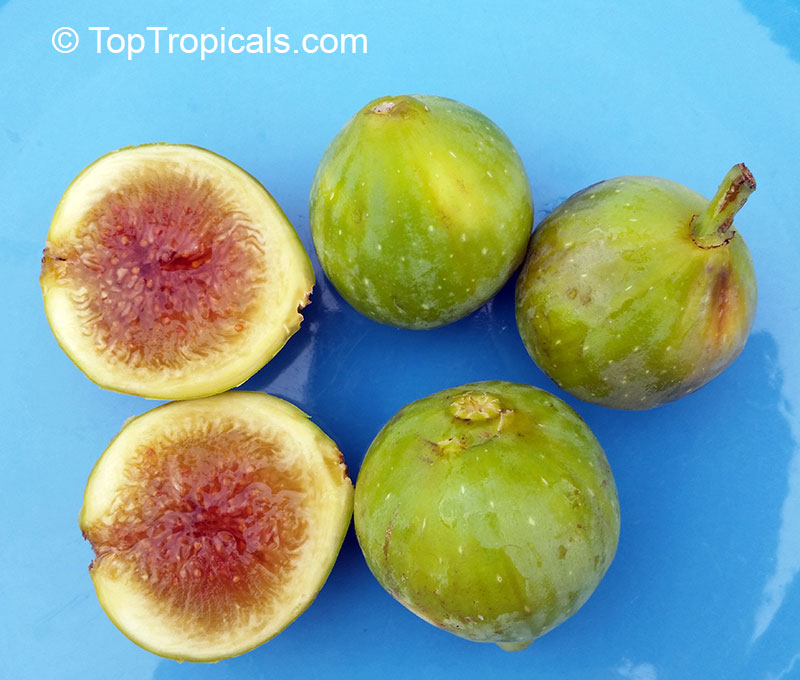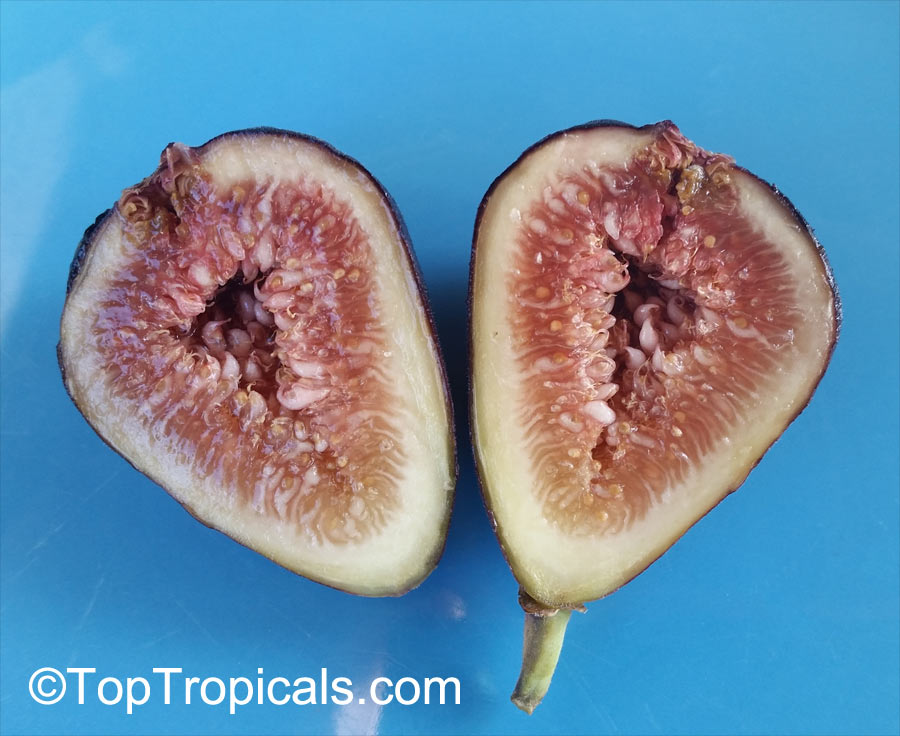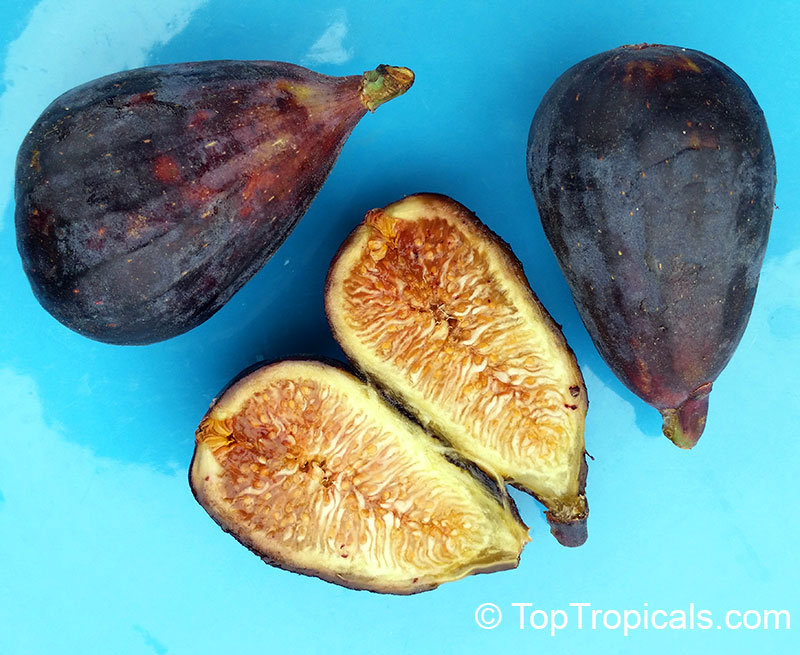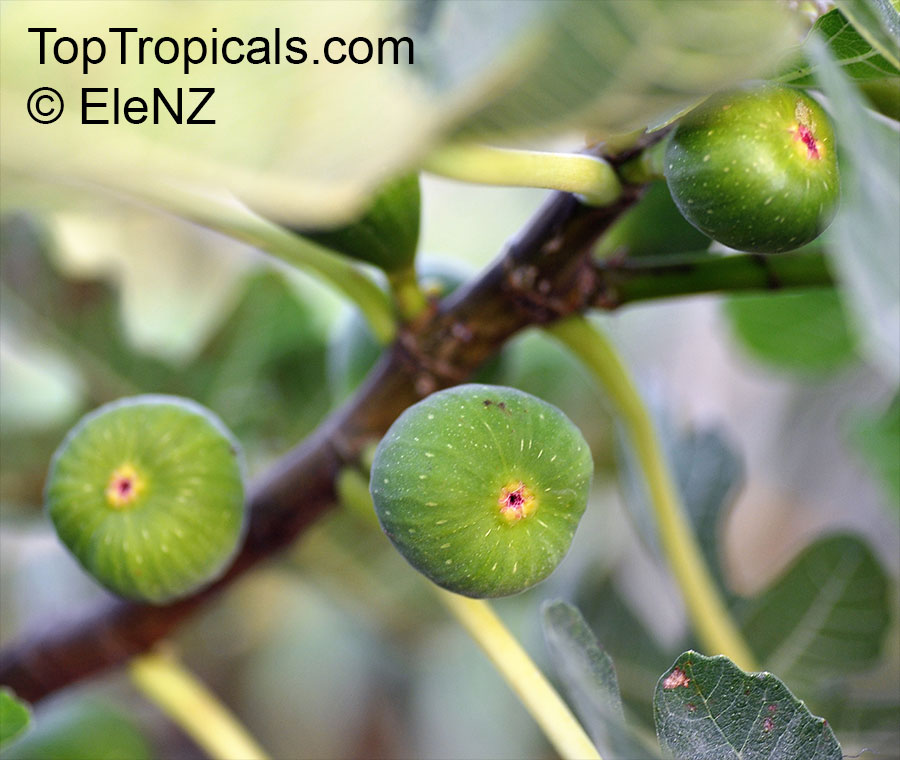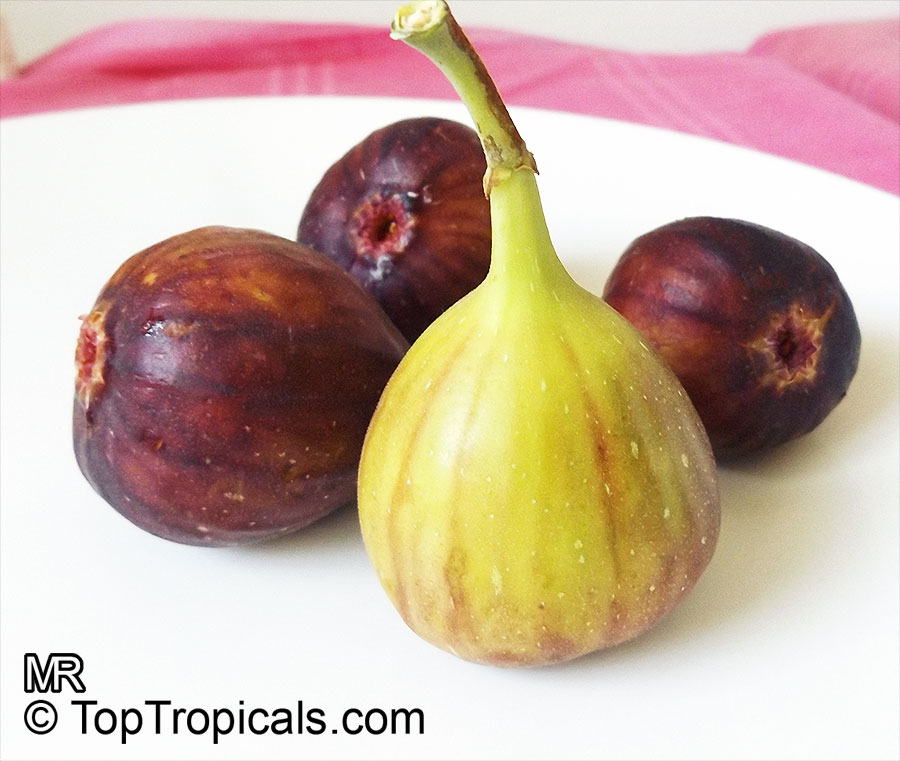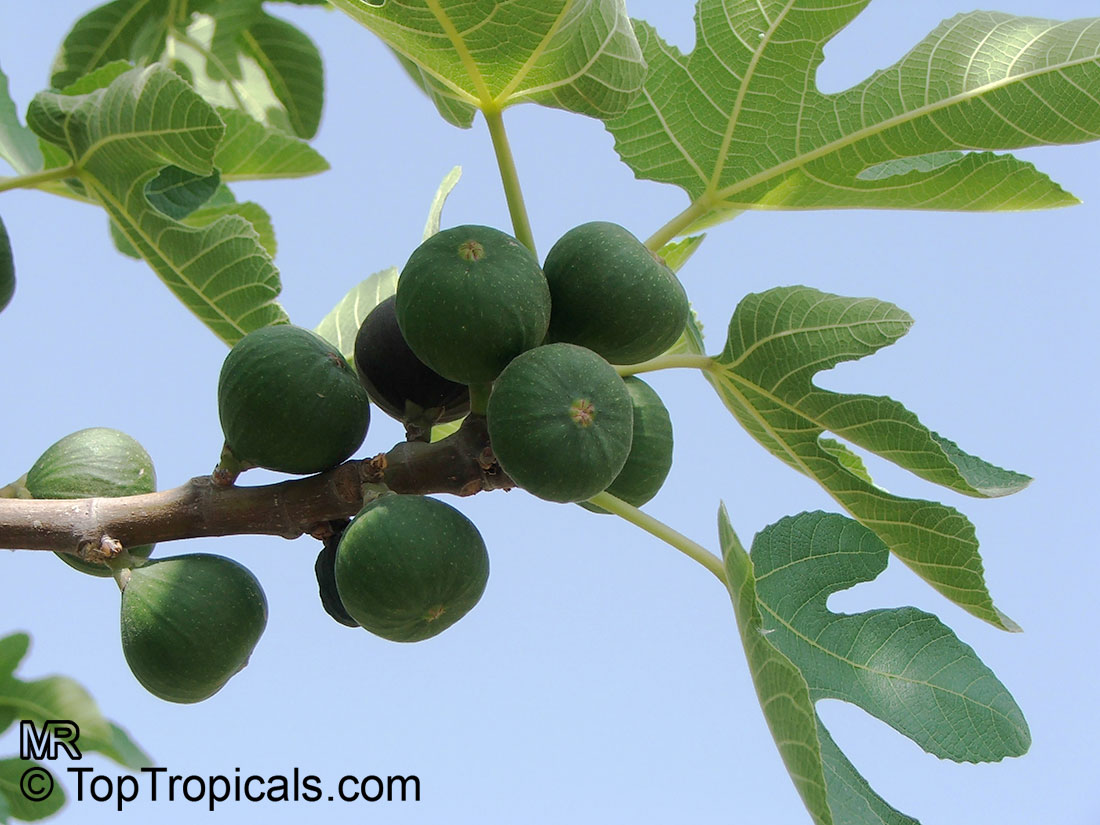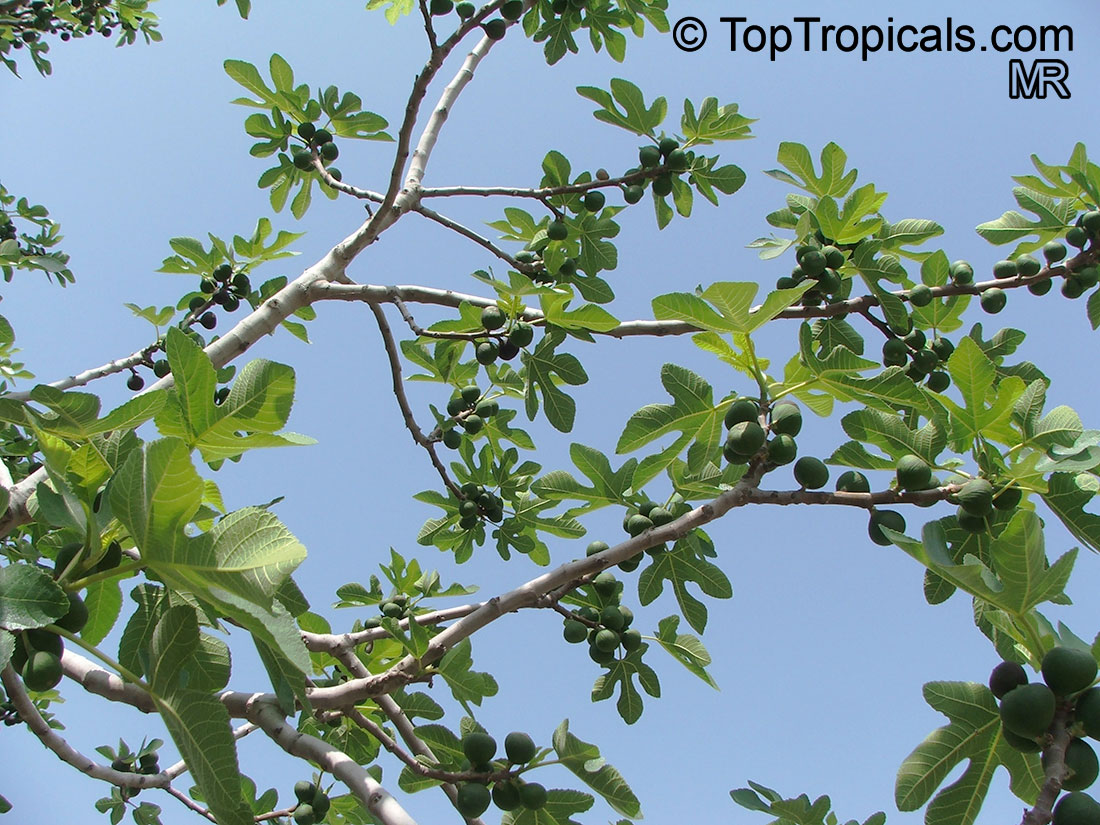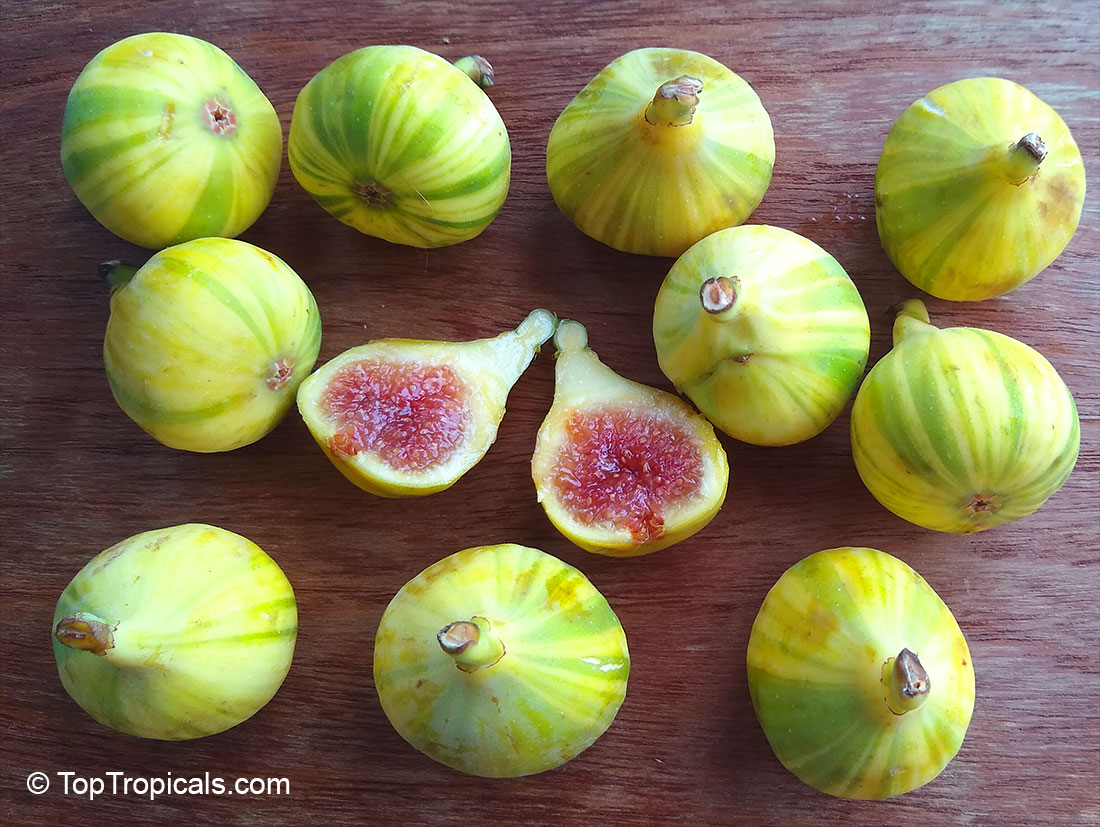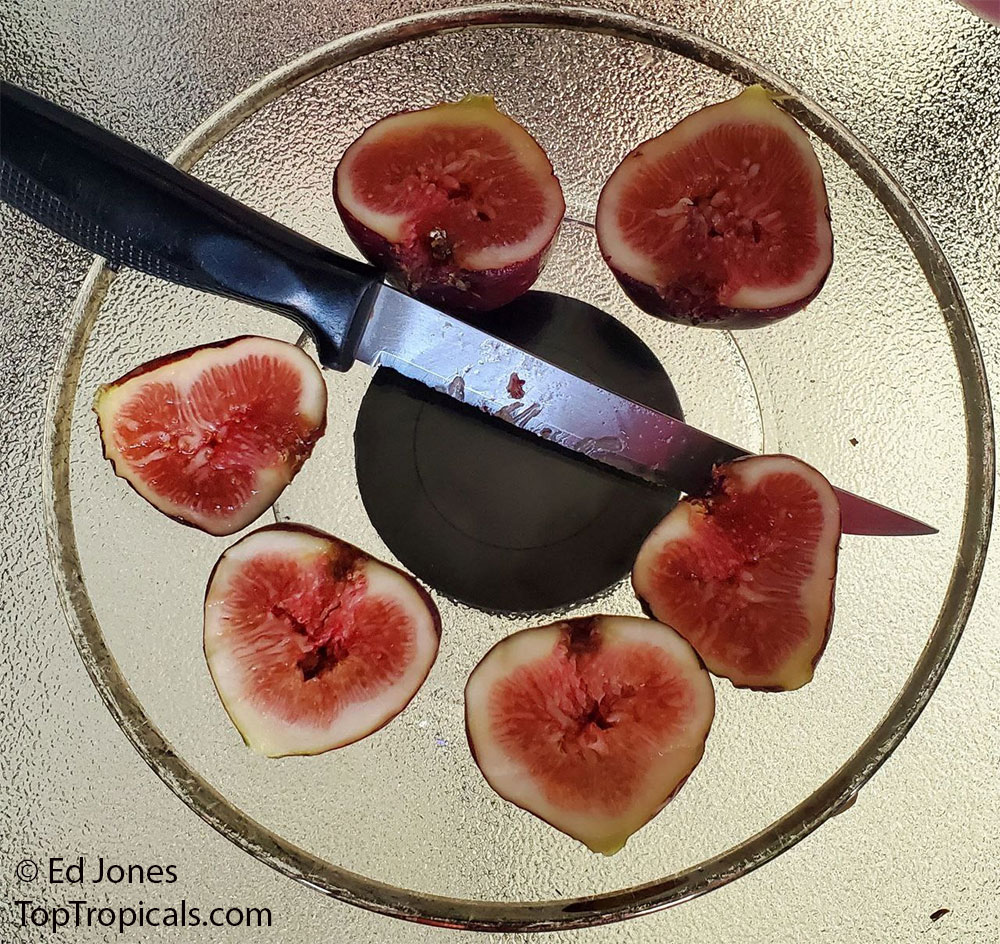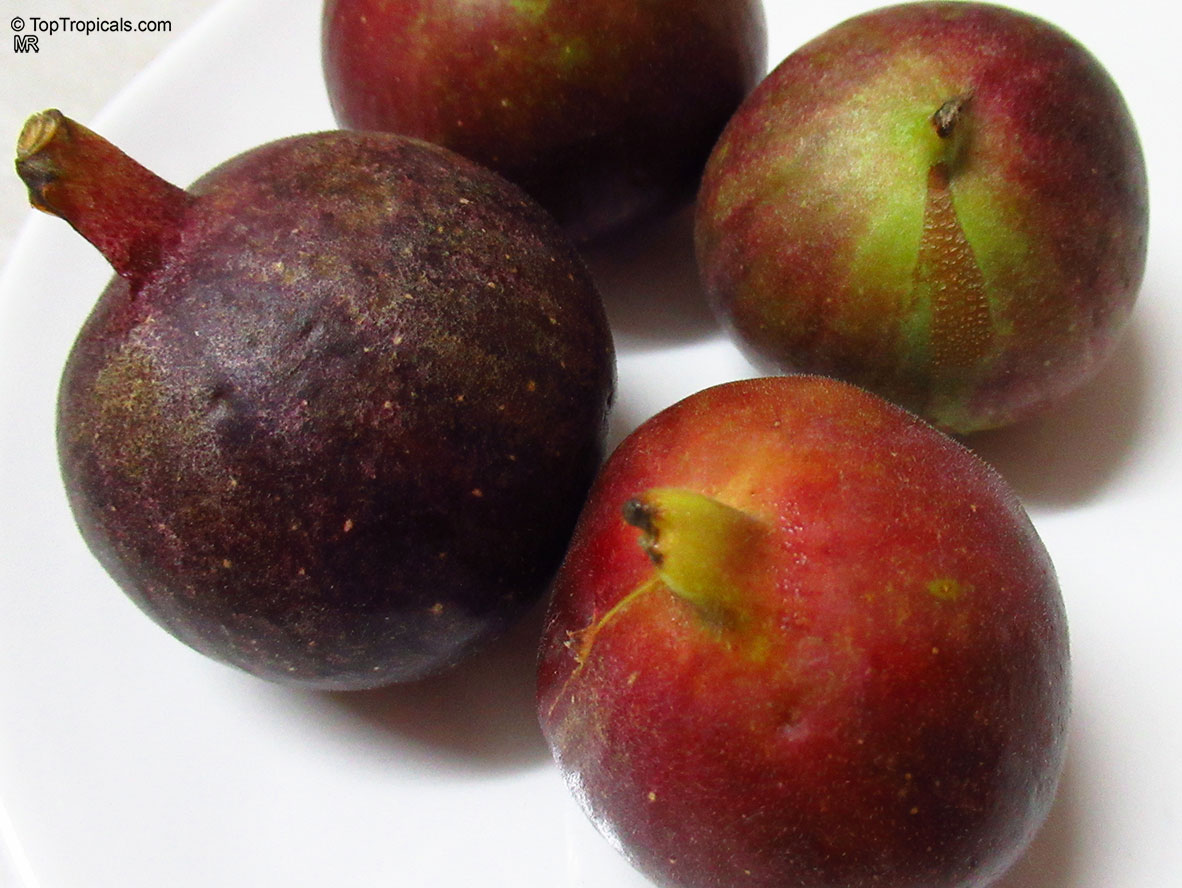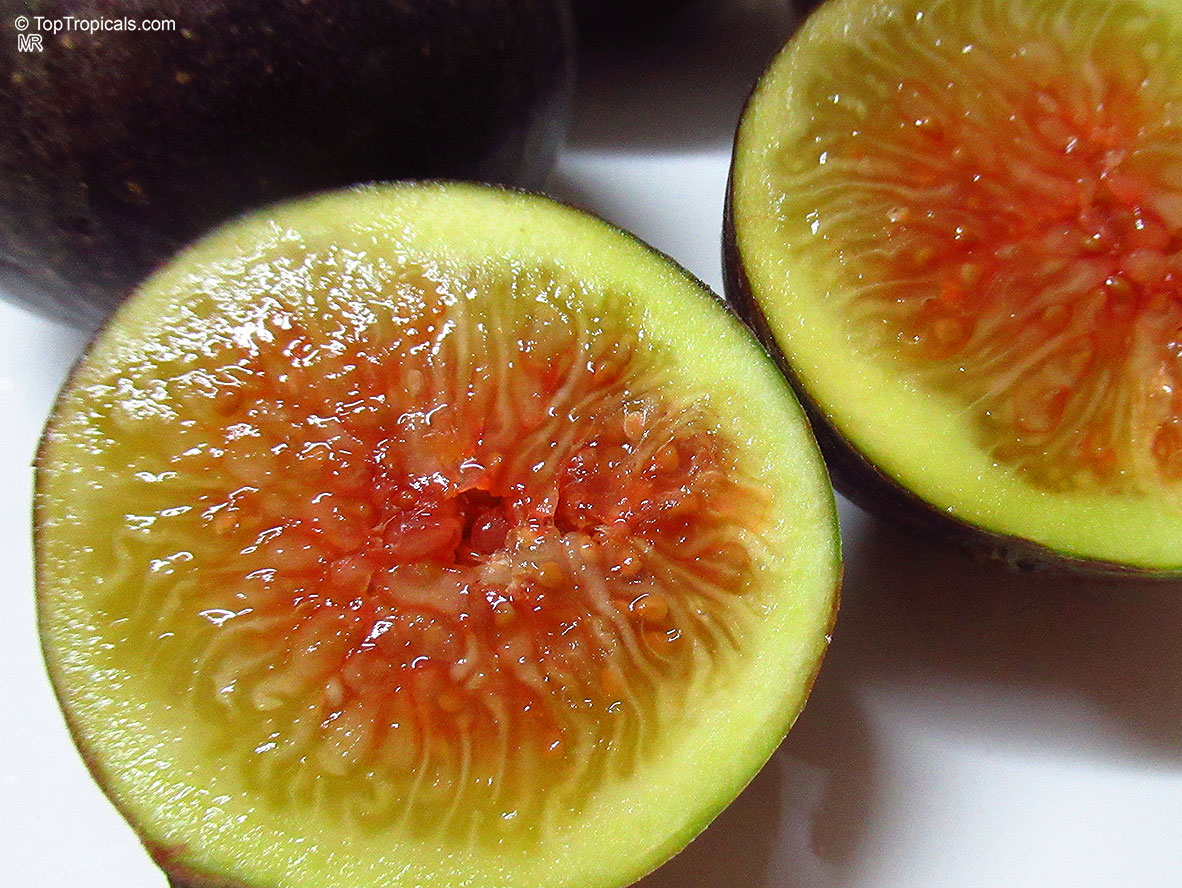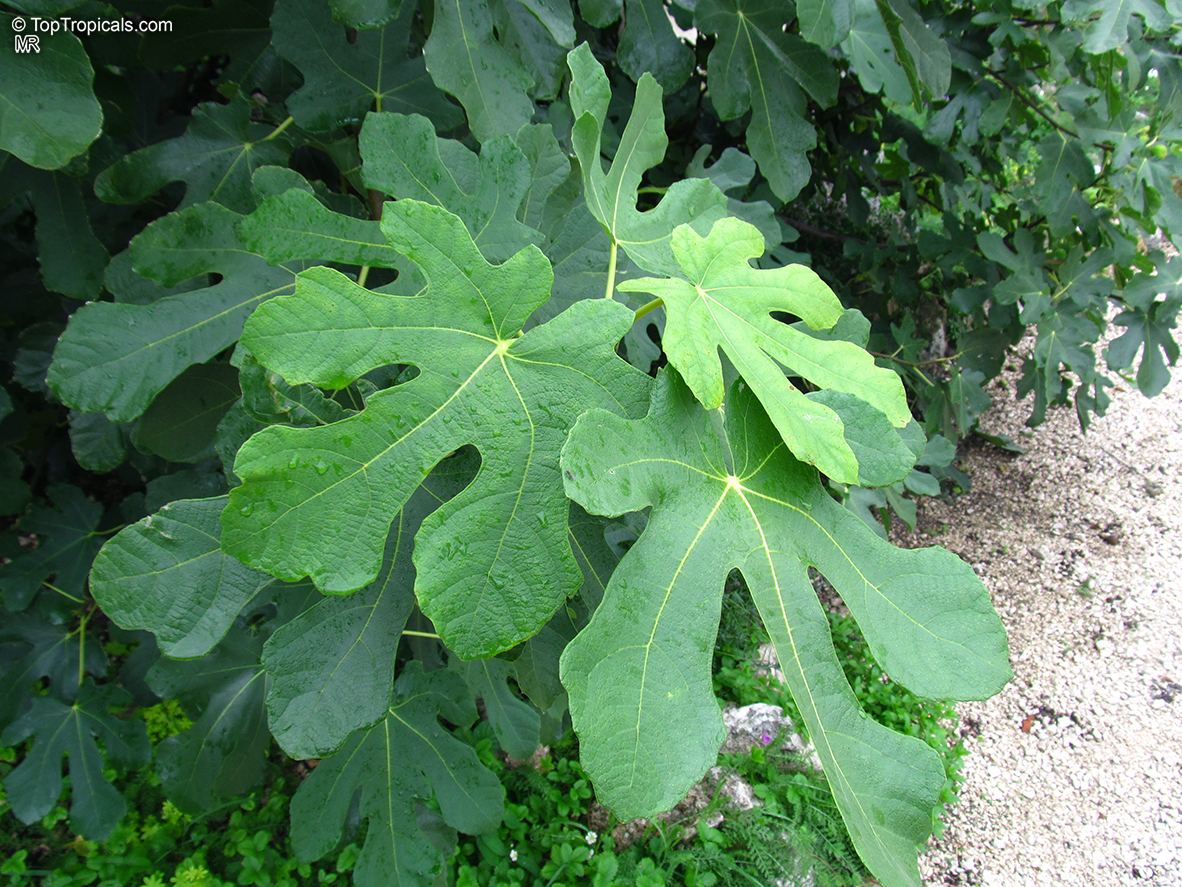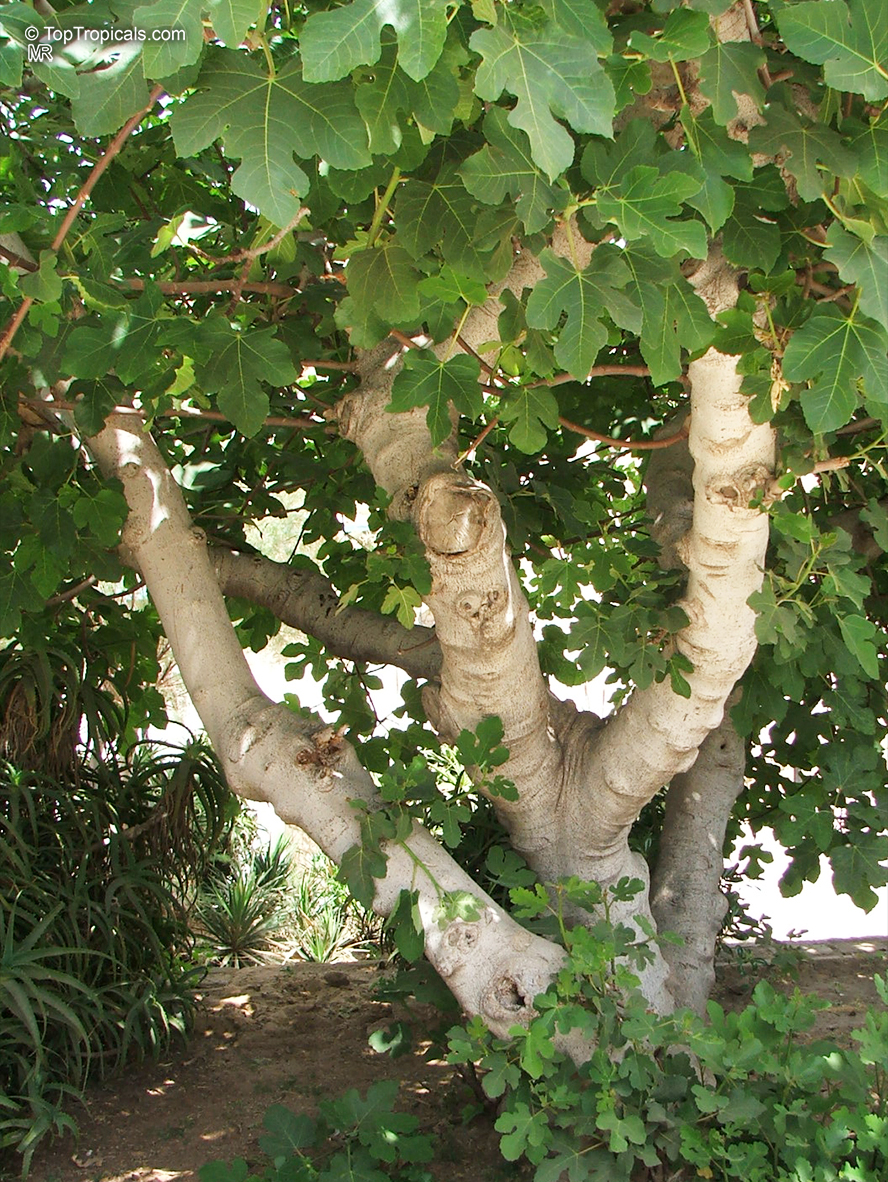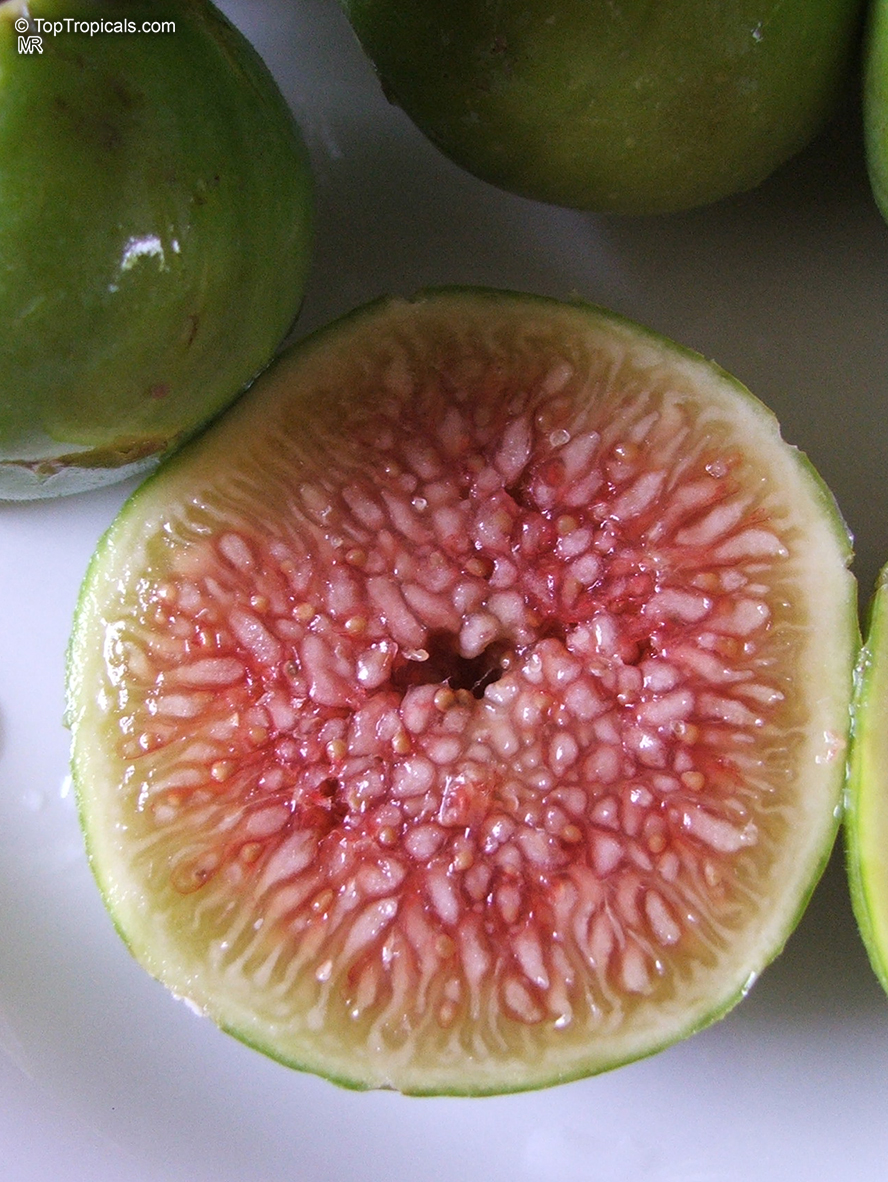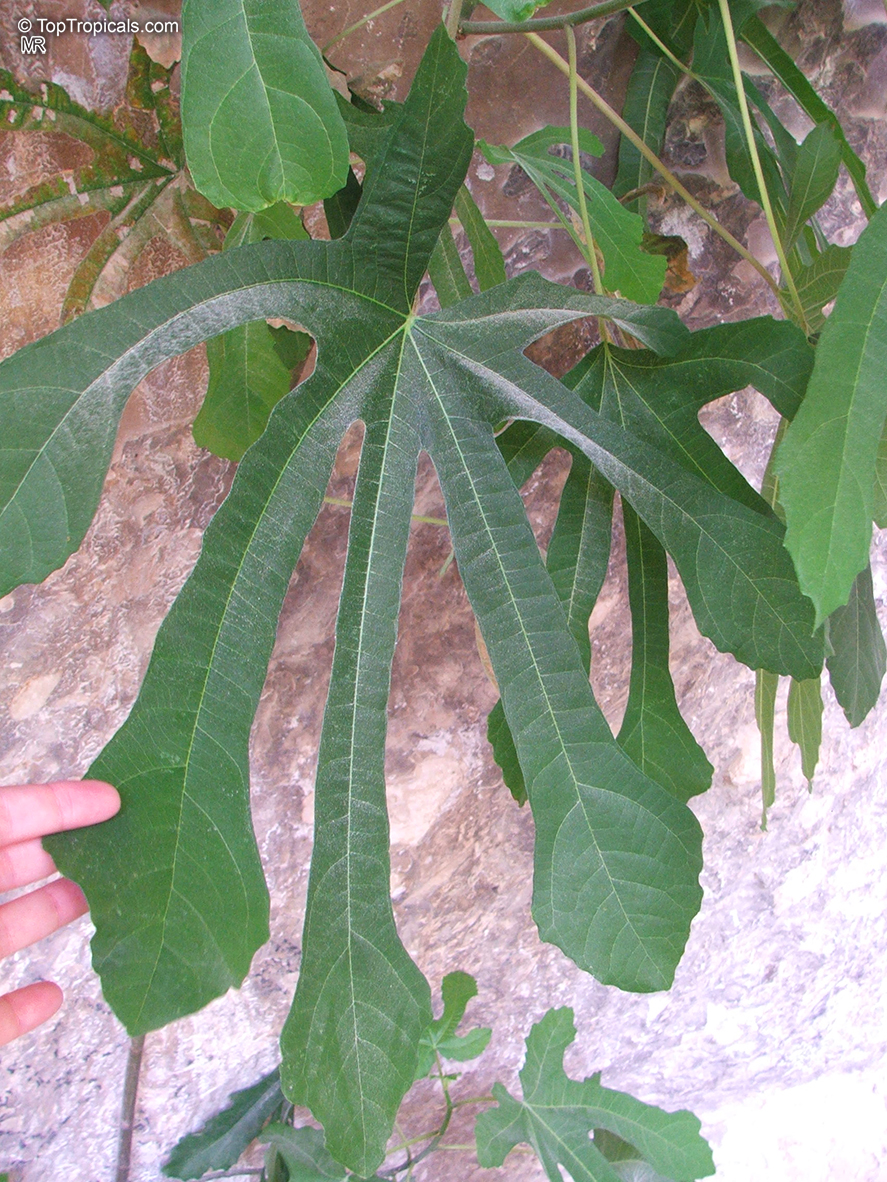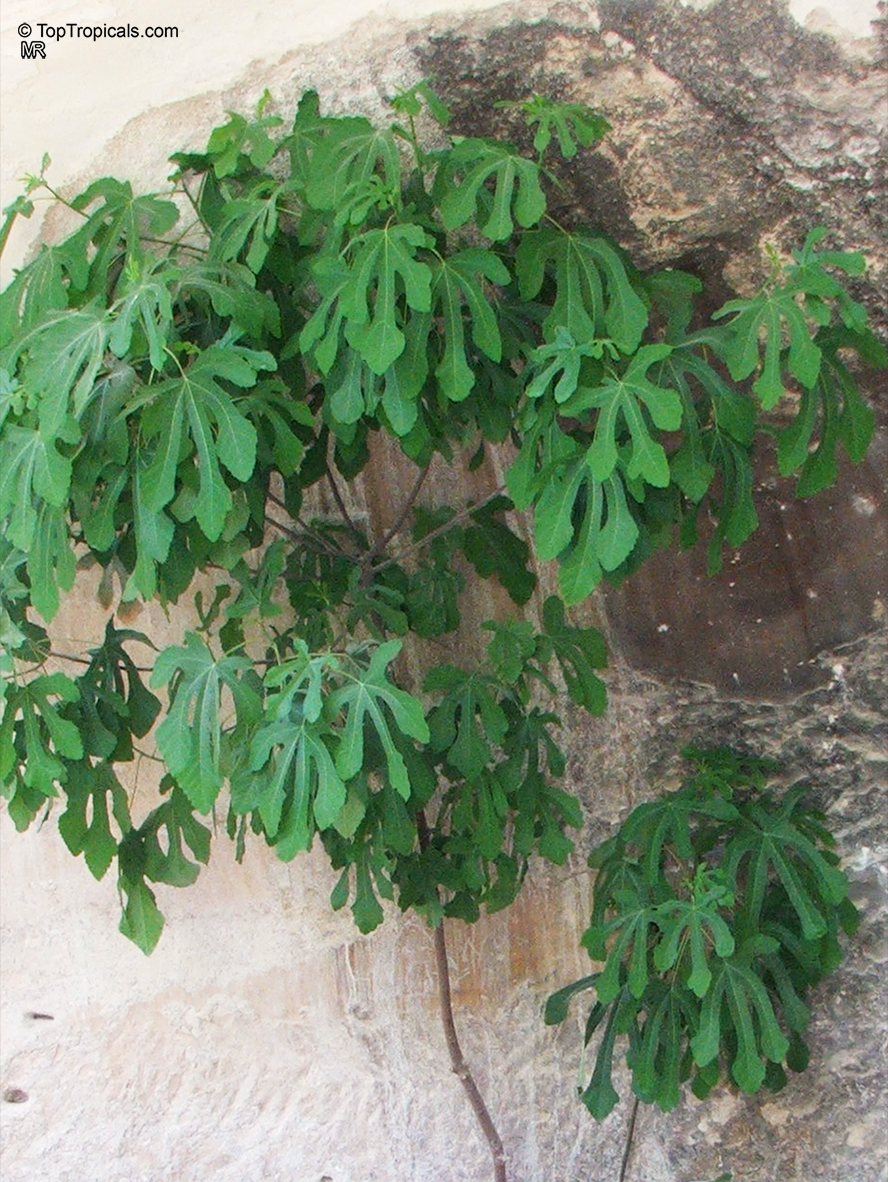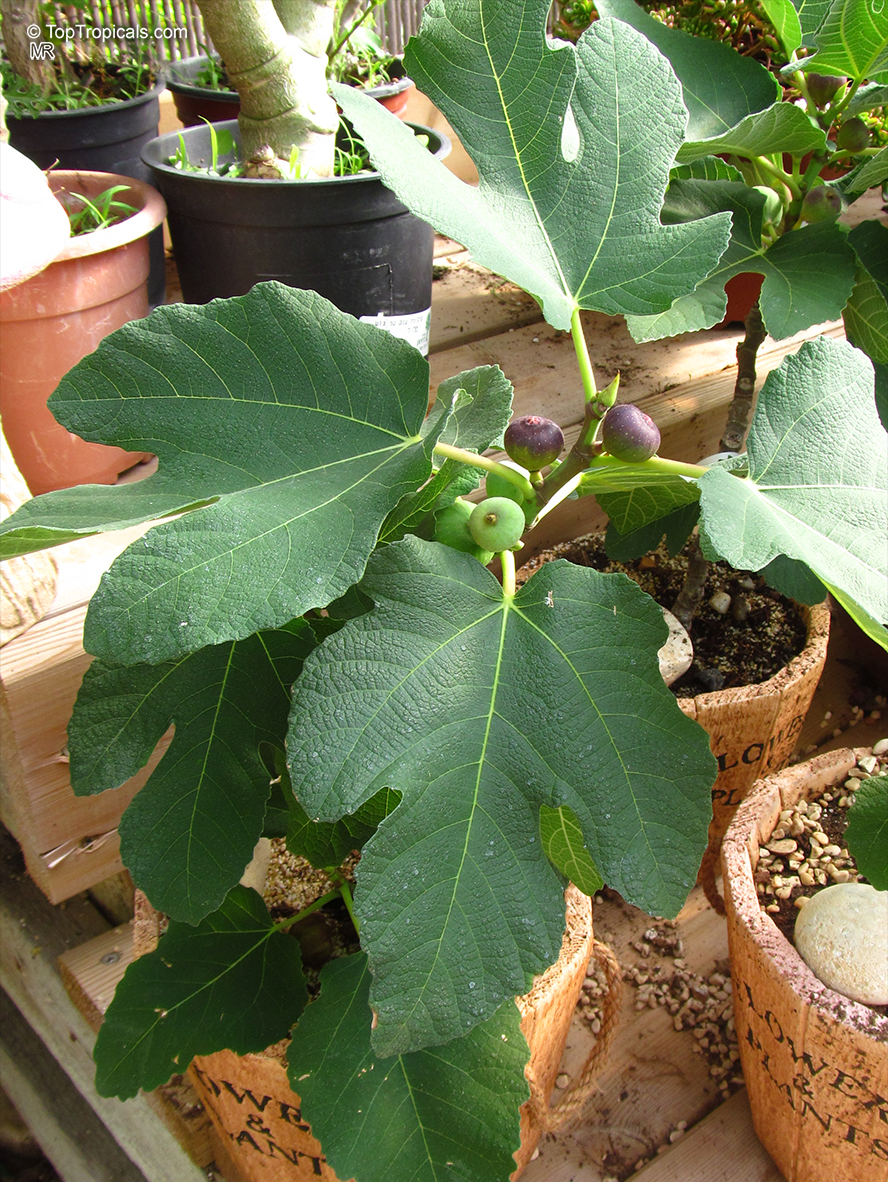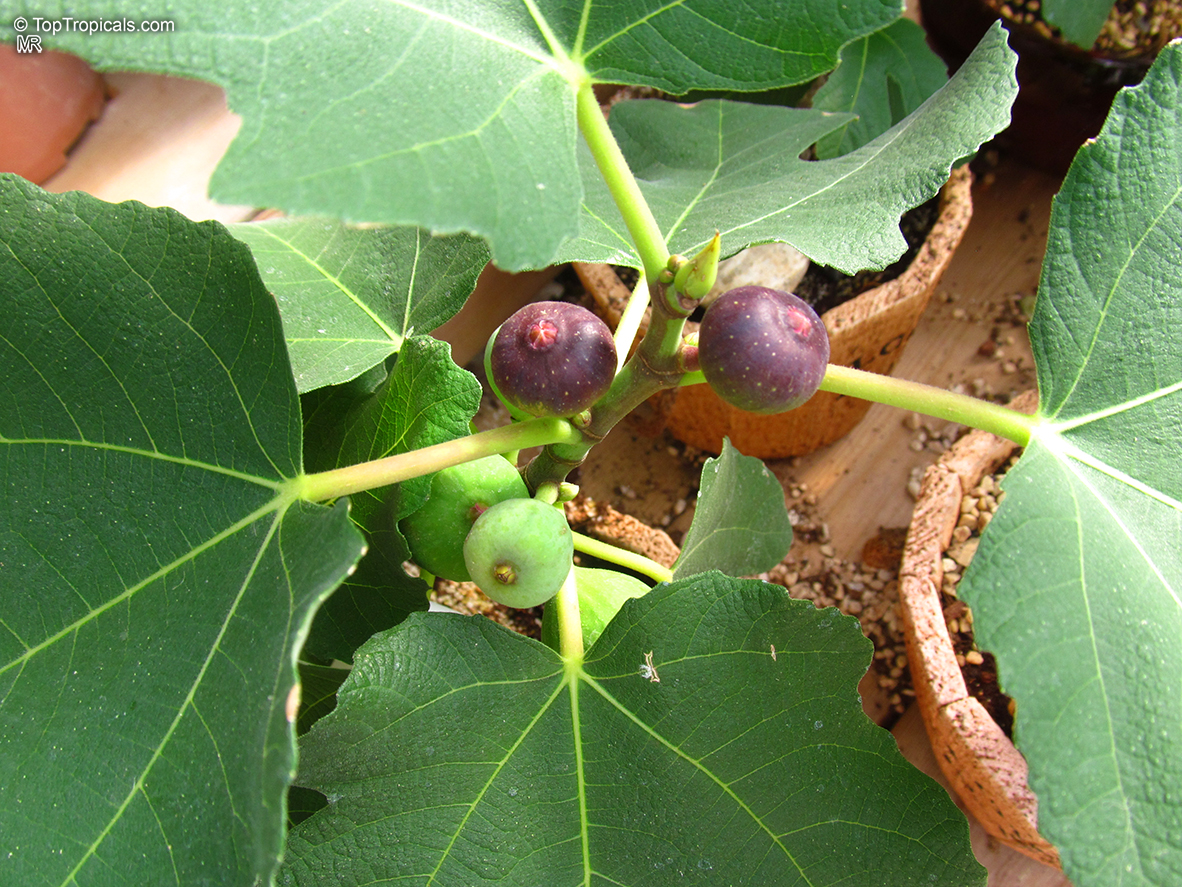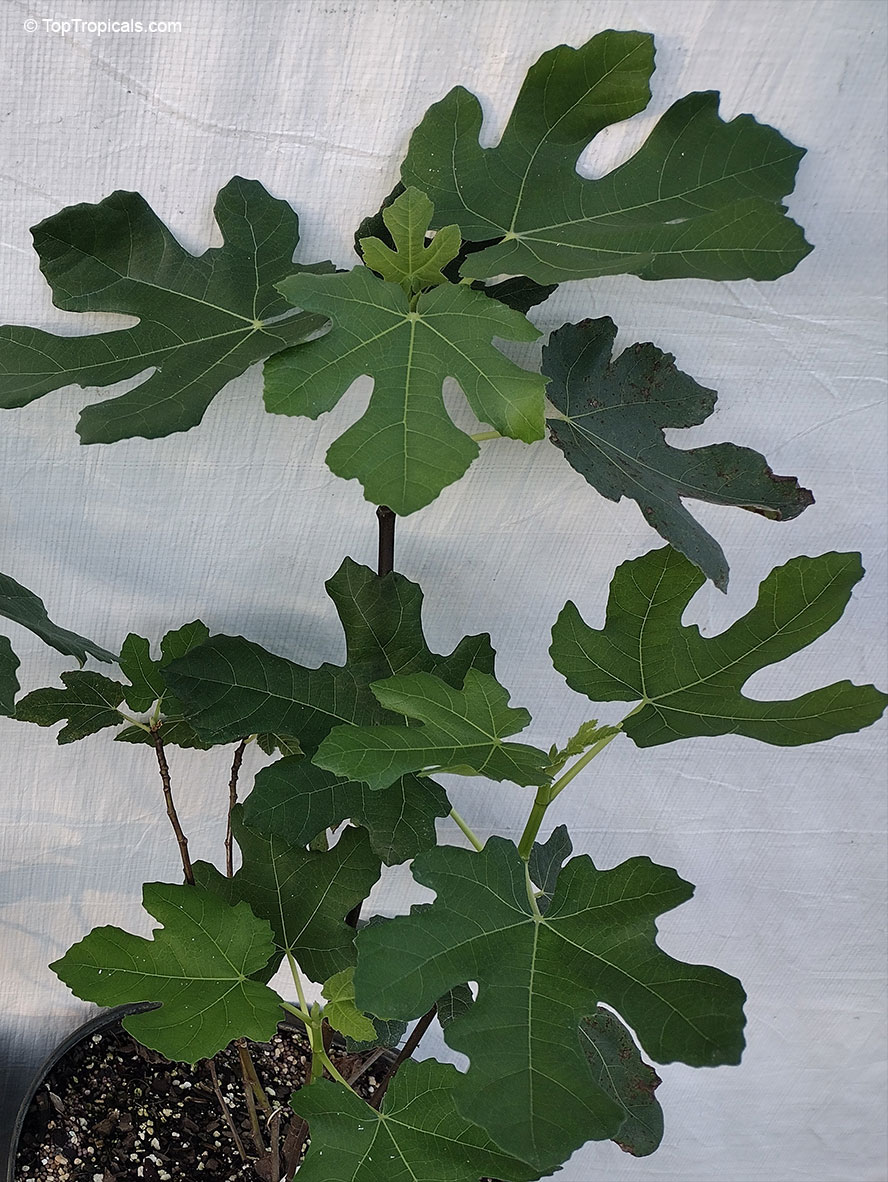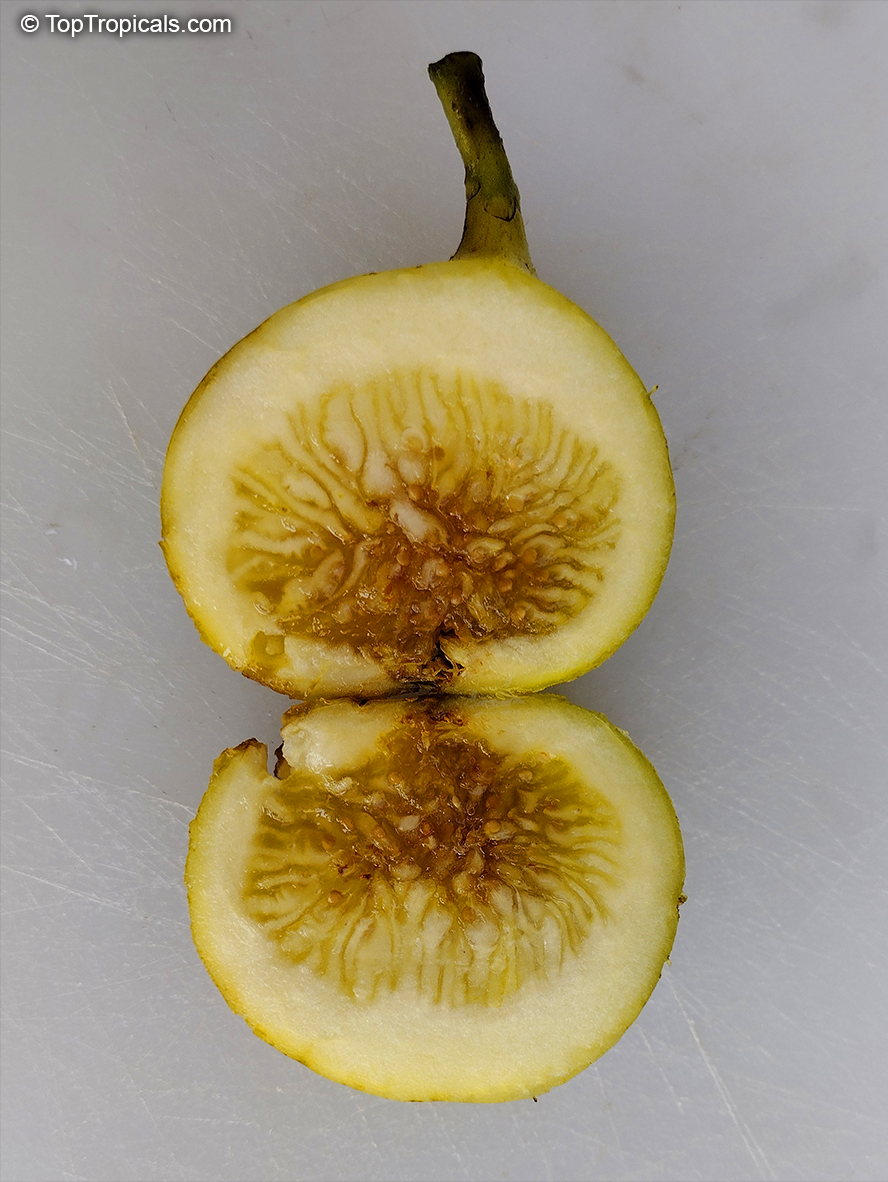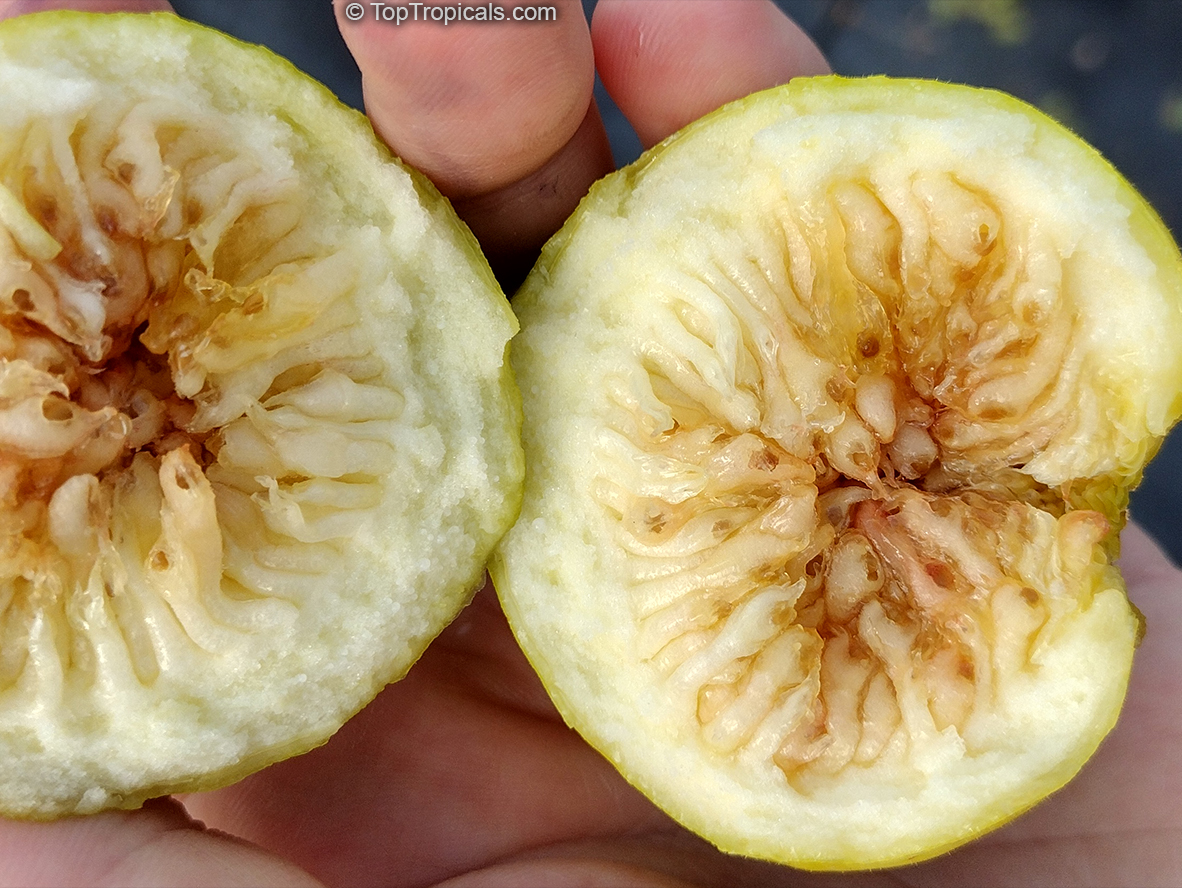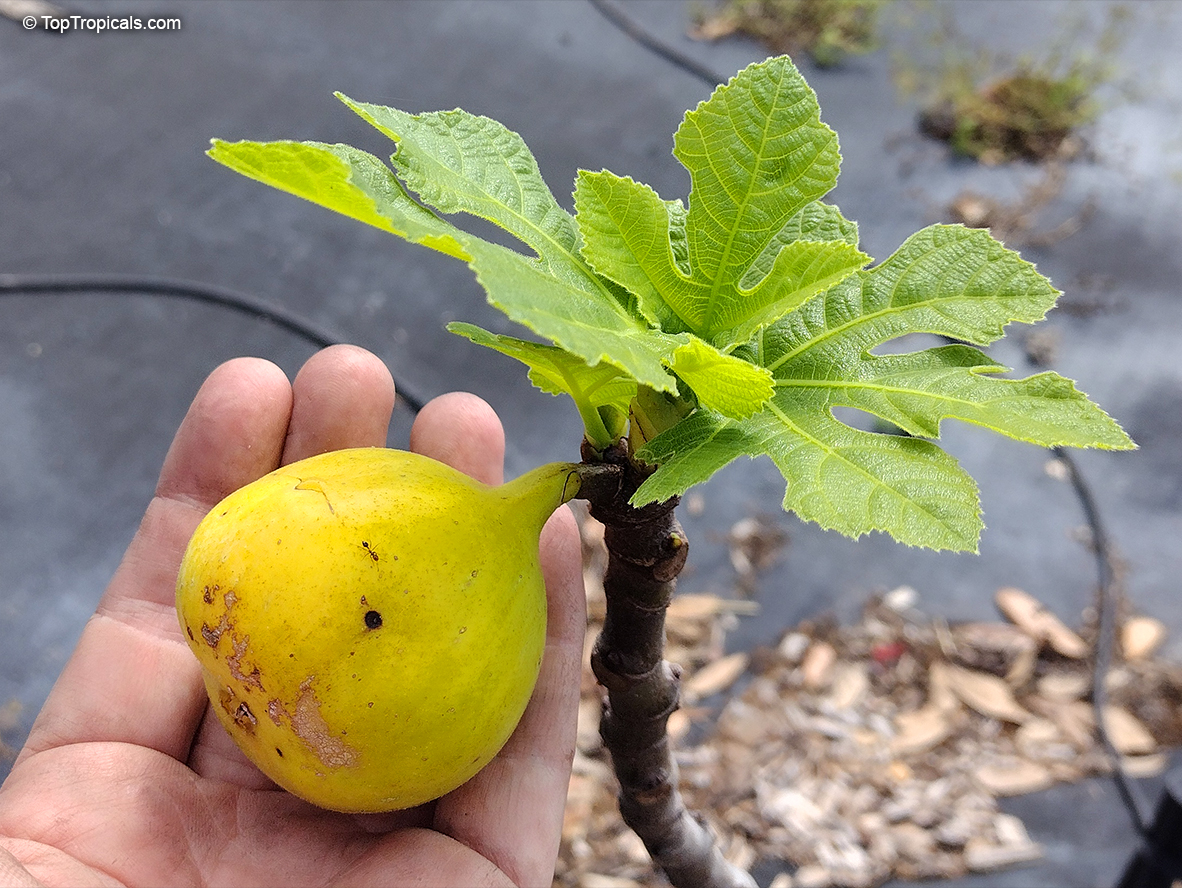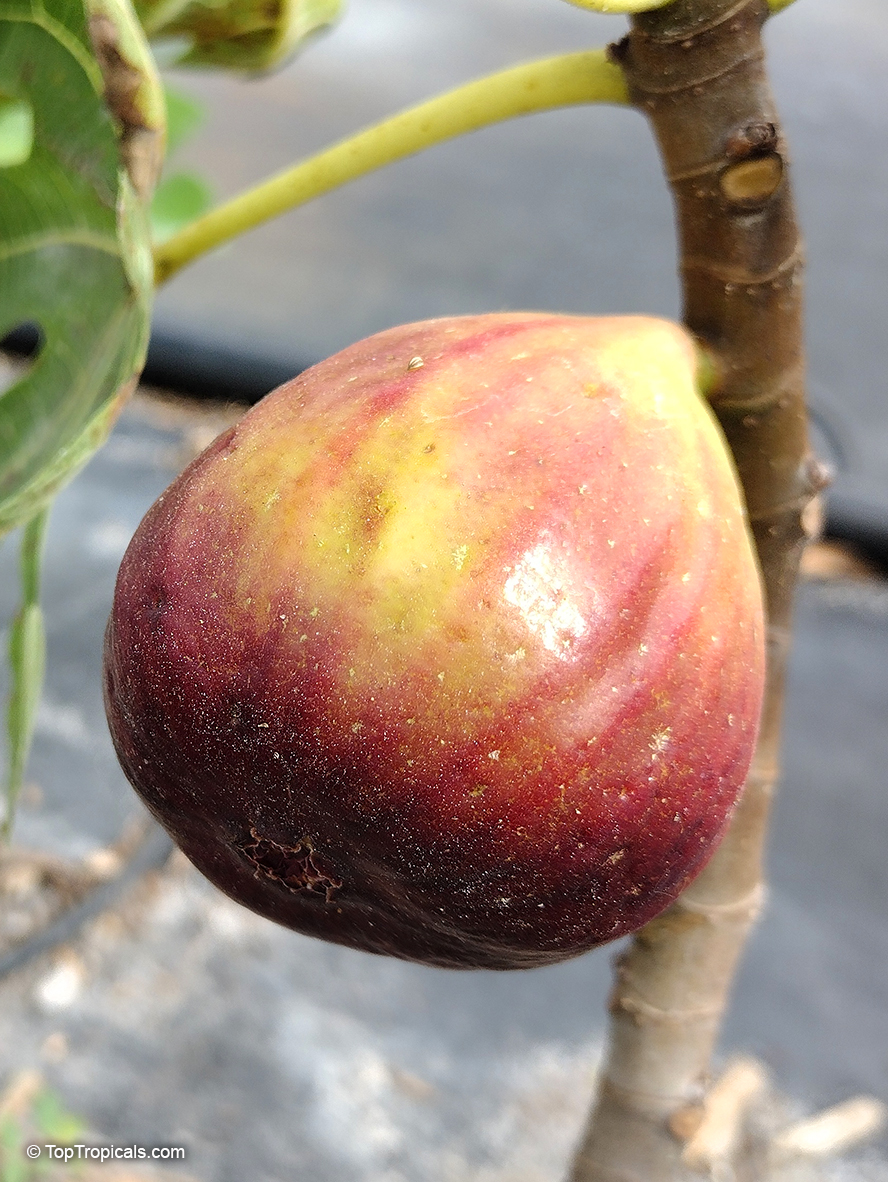Ficus carica (Fig Tree)
Top Tropicals Plant Encyclopedia
Botanical name: Ficus carica
Common names: Fig Tree, Brevo
Family: Moraceae
Origin: Southwest Asia










A small tree native to southwest Asia. Widely grown for its fruit and is commercially grown in the United States in California, Oregon, Texas, and Washington. The fig was one of the first plants ever to be cultivated by humans. Fossilized figs dating to 9400-9200 BC were found in an early Neolithic village in the Jordan Valley.
The lovely lobed green leaves make it valuable in the landscape even without its fruit. They are very large, prominently veined and deeply lobed and may be 8 to 10 inches long. Most figs are deciduous during the winter months and drop their leaves in late December and resume growth in February and early March.
The fig fruit is actually a hollow receptacle with hundreds of small fleshy flowers facing each other on the inside. In their native habitat, figs are pollinated by a tiny gall wasp that enters the flower cluster through a small opening in the apex. Each flower then produces a small fruit containing the seeds. The wasp is not present in most of North America, so seeds are not produced.
Figs are prized for their delicious fruit, which can be one to three inches in length, violet, brown or black. There are even varieties with yellow fruit. Most fruits are borne from early summer to late fall on new growth, and the fruits generally mature very quickly.
Figs grow nicely and will bear fruit when grown in containers where they can be artfully pruned to create a living sculpture to decorate deck or patio. The fig makes a splendid patio or indoor plant that grows with little attention, save for constantly moist soil and bright light. Prefers alkaline, well-drained soil, but can tolerate wet conditions (waterlogging). Drought tolerant, once established. Mulch heavily with organic materials to conserve moisture, improve soil structure and reduce root knot nematode levels. Responds well to pruning and can be espaliered or pruned heavily in the dormant season for size control and to increase the main crop.
Trees are very sensitive to frost when actively growing, but can withstand 10F when dormant. Young fig trees should be watered regularly until fully established.
Figs will shade out anything growing beneath. Repeated pruning to control size causes loss of crop. Roots are greedy, traveling far beyond the tree canopy. For container grown plants, replace most of the soil in the tub every three years and keep the sides of the tub shaded to prevent overheating in sunlight.
See article about Fig Tree.
Similar plants: Ficus carica (Fig Tree)
- Ficus abutilifolia (Large-leaved Rock Fig)
- Ficus altissima (Council Tree)
- Ficus aspera (Variegated Clown Fig)
- Ficus auriculata (Elephant ear fig tree)
- Ficus benghalensis (Banyan Tree)
- Ficus benjamina (Benjamin Fig)
- Ficus brusii (Highland breadfruit)
- Ficus capensis (Broom Cluster fig)
- Ficus citrifolia (Shortleaf Fig)
- Ficus cordata subsp. salicifolia (Willow-leafed fig)
Recommended Fertilizer: SUNSHINE C-Cibus - Crop Nutrition Booster
SUNSHINE-Honey - sugar booster
Recommended Fertilizer: SUNSHINE C-Cibus - Crop Nutrition Booster
SUNSHINE-Honey - sugar booster
Recommended Fertilizer: SUNSHINE C-Cibus - Crop Nutrition Booster
SUNSHINE-Honey - sugar booster
Recommended Fertilizer: SUNSHINE C-Cibus - Crop Nutrition Booster
SUNSHINE-Honey - sugar booster
Recommended Fertilizer: SUNSHINE C-Cibus - Crop Nutrition Booster
SUNSHINE-Honey - sugar booster
